

12 Body Language Mistakes to Avoid During a Presentation
It has been involuntary to think that we should only pay attention to how we present the content, the clothes we use, and make the audience participative in preparing for a public presentation.
A quick example is that sometimes we tend to deliver our presentations while seated to avoid the audience’s pressure. Alternatively, we can be staring at one spot in the room to avoid eye contact and think we found a successful strategy.
The Bad News: The audience can see or understand that as a lack of confidence and not trust your credibility or expertise on the topic.
The Good News: No worries, there are ways to do better and appear confident, and you will learn all that here.
Let’s start by looking at the list of 12 Body Languages Mistakes to Avoid During a Presentation :
Highly Recommended Article: AceThePresentation. 11 Best Body Language Tips for Engaging Presentations .
If you chew gum while delivering a presentation, it may give the audience the impression that you are disrespectful, unprofessional, and unethical.
When we cross our arms, it passes the message that we are defensive about something that we don’t know or that the audience wants to suggest, so it is a visual barrier and a communication one.
Let us imagine if the audience asks us a question or even makes a suggestion that invites us to look at our arguments in a new dimension that we’ve never thought of before, and that is our reaction.
Even if we are open to looking forward to that new perspective, if we have our arms crossed while saying that the suggestion is an excellent point of view, it may look like that we feel threatened and, because of that, getting defensive.
There is a right way to cross your legs when we need to do our presentations while sitting, and crossing our legs or jiggling them is not one of them. This may show the audience that we are getting nervous and impatient with the situation we are facing.
When trying to pipe the presentation’s nervousness, it is common for us to use fidgeting with our fingers or objects, distract ourselves from the problem (stress), and focus on delivering the message.
You can usually avoid it if you take some time to breathe, walk around, and see the faces of the people you are delivering the presentation to, focusing on the present, which will keep away the anxiousness.
Just like fidgeting, grabbing objects against our bodies will not solve the problem. Thus, the audience will be distracted, trying to figure out why we have them.
Try to relax by visualizing the whole situation as a conversation, and make it be like that. This way, we can deliver the message that we want to spread and make them engage with us and share their perspective.
Instead of that, there is a better solution; we can use a pulse watch or have a friend keeping the time for us. This way, you will avoid having long presentations that will make the audience feel tired.
Balance is always the key. You can walk around to know the faces and stand confidently sometimes; both are a great option.
Avoiding eye contact can be a big sign of insecurity and a back up to a confrontation. If you only focus on one person or don’t look at all to the audience, you make things a lot more awkward between you and the audience.
Highly Recommended Article: 6 Solid Tips About How to Make Eye Contact
It can be misunderstood as an annoying habit and nervousness, which will drive the audience’s attention to anything but our message.
Even if we know the people we are delivering a speech to, we must separate the work environment with day-to-day will be very good for our career.
Sometimes even when we have the slides for our presentations ready, we can get lost or frustrated because it is getting hard to recall our next point of discussion, so we may convey that to the audience, through a confused or lost face – which is bad.
Our body language has a lot more to say than we sometimes imagine. Sure there are symbols as nod heads, and it’s nice that we can right away know the meaning. Still, sometimes our body reflects how we feel about something or is about to deliver a presentation.
AceThePresentation. 11 Best Body Language Tips for Engaging Presentations .
Similar Posts
7 different types of presentation, communication skills guide: examples of 11 good and 8 poor ones, designing a killer presentation in 8 steps, a 9 step guide to using humor in speeches, the ultimate guide to public speaking, how to become a leader here’s 10 smart steps to take to become a leader.

Communication
8 fatal body language mistakes to avoid during presentations.
Body language is one of the most crucial vehicles to interact. During presentations, you always use facial expressions and hand movements to explain and communicate your message. Using your facial expressions and hand movements or gestures can enable you to convey your content successfully and shows your confidence. If you use them inappropriately or inaccurately, they can become a source of distraction for your audience and will conflict with your message.
Here are eight presentation body language mistakes that you should avoid that include your movement, posture and facial expression:
1. Movements of the hands
One of the common mistakes among presenters is certainly the movements of the hands. Hiding your hands, clasping them, or fidgeting with them displays your nervousness, and might give your audience the sense that you do not believe in what you’re saying. Keeping your hands in pockets is also a meek gesture that indicates that you are afraid, unsure, or not interested in the presentation. Some of your audience members might find it rude towards them. Remember, if you don’t look confident in you are presentation –the audience will not remain attentive.
Instead – Try keeping your arms in front in an open manner. Use your hands to explain your point of view through calculated, concise movement.
2. Crossed arms
Crossing your arms might also give the impression to your audience that you are unenthusiastic about your presentation or information, or that something is incorrect. It’s a defensive posture that will signal defensiveness and resistance and create a distance between you and your audience.
Instead – Keep your arms open, and at a certain distance from your body, almost like you are giving a big bear hug. This open gesture is engaging and welcomed, it will give a message of peace and confidence to the audience.
3. Avoiding Eye Contact
Avoiding audience eye contact and looking at the watch, at your feet, or constantly looking at the screen or your presentation will look facetious and unprofessional.
Instead – Always consider to make an eye contact with audience when making a point. You can even make it short but don’t be too quick, stay truthful when eye contact. Quickly moving your head during presentation will portray that you are personally interested and passionate in that individuals.
4. Bad Posture
Posture is one of the most important attributes within body language during delivering a presentation. If you are drooping your back and shoulders and your neck limping, it will defiantly convey a weak message and your audience might start thinking about your professionalism.
Instead – aim for a neutral position, sitting or standing tall like a string is connecting your head to the ceiling.
5. Bad body movement
Walking back and forth and moving your arms and legs quickly will give an odd feeling.
Instead – If you do need to move, it should have a purpose. It is also important to not stay in one place, so moving throughout the entire crowd can send a positive message.
6. Legs movement
During a presentation, naturally the legs can be the toughest to control while trying to concentrate on presenting and conveying your message. Jiggling your legs and constantly settling your standing position will signal the audience that you’re uncomfortable and restless.
Instead – While presentation stand confidently, make controlled movements towards the audience. Where you move while presenting, make the audience feel that you have practiced these movements before – make them believe you are a seasoned expert.
7. Forget to Smile
Your face is most important aspect in making a good first impression. Unless you are delivering some bad news, it is suitable for you to smile, even in a business meeting.
Instead –Begin your presentation with a smile, in result your audience will receive your message more willingly. Try to keep smiling during your presentation, particularly when you want to make people laugh. People will respond to a smile by smiling back. Interaction is key for a remarkable presentation.
8. Inappropriate use of hand gestures
Moving your hands during your presentation supports every word with more powerful meaning. Whenever you want to make an important point, emphasize your words with hand gestures. Your audience will remember the fact or a information better when you attach it to a movement or specific action.
Try to remember all of these mistakes and tips to overcome them and the next time you present – whether it is in a conference room or in your everyday life – and see how your audience reacts to this!
Featured photo credit: Flipsnack via unsplash.com

How to Use a Planner Effectively

How to Be a Better Planner: Avoid the Planning Fallacy

5 Best Apps to Help You Delegate Tasks Easily

Delegating Leadership Style: What Is It & When To Use It?

The Fear of Delegating Work To Others

Why Is Delegation Important in Leadership?

7 Best Tools for Prioritizing Work

How to Deal with Competing Priorities Effectively

What Is the RICE Prioritization Model And How Does It Work?

4 Exercises to Improve Your Focus

What Is Chronic Procrastination and How To Deal with It

How to Snap Out of Procrastination With ADHD

Are Depression And Procrastination Connected?

Procrastination And Laziness: Their Differences & Connections

Bedtime Procrastination: Why You Do It And How To Break It

15 Books on Procrastination To Help You Start Taking Action

Productive Procrastination: Is It Good or Bad?

The Impact of Procrastination on Productivity

How to Cope With Anxiety-Induced Procrastination

How to Break the Perfectionism-Procrastination Loop

15 Work-Life Balance Books to Help You Take Control of Life

Work Life Balance for Women: What It Means & How to Find It

6 Essential Mindsets For Continuous Career Growth

How to Discover Your Next Career Move Amid the Great Resignation

The Key to Creating a Vibrant (And Magical Life) by Lee Cockerell

9 Tips on How To Disconnect From Work And Stay Present

Work-Life Integration vs Work-Life Balance: Is One Better Than the Other?

How To Practice Self-Advocacy in the Workplace (Go-to Guide)

How to Boost Your Focus And Attention Span

What Are Distractions in a Nutshell?

What Is Procrastination And How To End It

Prioritization — Using Your Time & Energy Effectively

Delegation — Leveraging Your Time & Resources

Your Guide to Effective Planning & Scheduling

The Ultimate Guide to Achieving Goals

How to Find Lasting Motivation

Complete Guide to Getting Back Your Energy

How to Have a Good Life Balance
Explore the time flow system.

About the Time Flow System

Key Philosophy I: Fluid Progress, Like Water

Key Philosophy II: Pragmatic Priorities

Key Philosophy III: Sustainable Momentum

Key Philosophy IV: Three Goal Focus

How the Time Flow System Works
Body Language in Presentations
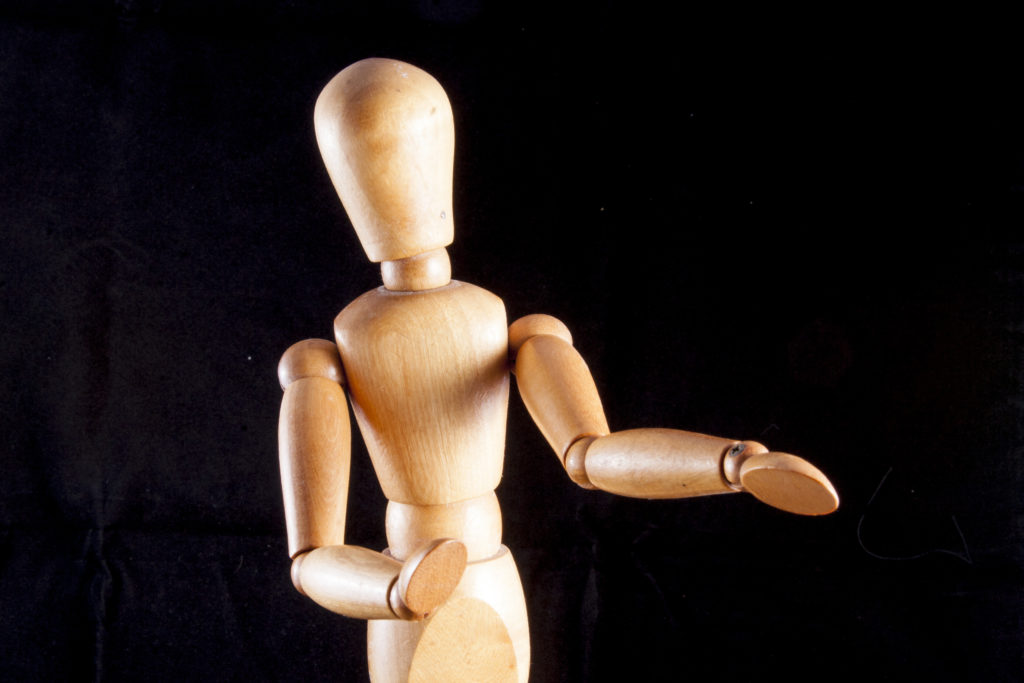
The words you use during your talk certainly matter, but the body language presentation cues that you project are as important – if not more so – in getting your message to land as you intended.
The gestures you use, the eye contact you make, the expressions you convey, and your very movement through a room offer a multitude of nonverbal signals to your audience.
It’s through these body language presentation cues that an audience will make assessments about your credibility, your expertise, and your passion for the subject, as well as whether you are qualified to seek followers for the cause you are advocating, to suggest the changes you are recommending, or to pitch the product you are selling.
Even something as seemingly small as the number of seconds you maintain eye contact with your audience or the decisions you make about what to do with your hands when presenting can make a difference. It boils down to the impression your words and your actions are making. And as researchers have discovered, first impressions are formed in mere seconds and are often quite accurate and long-lasting. In a well-known study led by the late Nalina Ambady, a professor of psychology at Boston’s Tufts University, students who watched two-second video clips (with the sound muted!) of a group of professors formed similar impressions to the ones drawn by students during a full semester.
So how do you exhibit the right body language for presentation success?
Effectively using body language in presentations takes skill and practice. But before we get into the tips and strategies for how to achieve the right look and tone, let’s look at the basics of body language in professional presentations, as well as why it is important to be aware of your body language while giving a presentation.
What is the Importance of Body Language in a Presentation?

The proper body language in a presentation helps to convey that you have confidence in yourself and your message. A speaker who knows the importance of body language in an oral presentation can instill trust in the audience, which, among other things, helps to forge a connection. Further, a presenter who knows how to effectively employ body language presentation skills can help to emphasize the ideas that matter most.
If you are genuinely passionate about your subject, show it. A lackluster delivery not only belies your enthusiasm, but also does nothing to enhance the meaning and effectiveness of your words. What should your audience believe? The words you use to share how excited you are to be there, or the flat tone with which you delivered them? Typically, they’ll assume your monotone delivery is more indicative of your true feelings than your words.
Great physical communicators learn how to successfully align their facial expressions, gestures, movements, posture, and other nonverbal elements with their message.

Photo by Element5 Digital on Unsplash
Presentation Body Language Basics
If you were delivering sad news, would you do it with a smile, a bright voice, and a bounce in your step? Or would you deliver it with a serious expression, a somber tone, and less pep? Any incongruity between your actions and your message is going to make it difficult for your audience to process, understand, and retain your message. You want your audience to be concentrated on your message and not the misalignment between your nonverbal movements and verbal delivery.
Your physical presence reveals your mental and emotional state to your audience – and everything about that presence should project that you feel comfortable, are in control of the room, and know your stuff. When it comes down to how to use body language to improve your presentation, it’s a matter of focusing on several key areas of your physical movements, including your eye contact, your gestures during presentation , and your presentation posture. (You can learn more about vocal cues here .)
When we work with our clients during our public speaking training sessions , we focus on how even small adjustments can make a difference in their delivery – such as a subtle shift of the shoulders, a more open stance, increased eye contact with their audience, and more natural and authentic gestures.
All these adjustments in your body language in a presentation can help to encourage audience participation, provide greater emphasis to your words, help you to appear and feel more natural, and increase your connection with the audience.
Eye Contact in Presentations: Why It’s Important
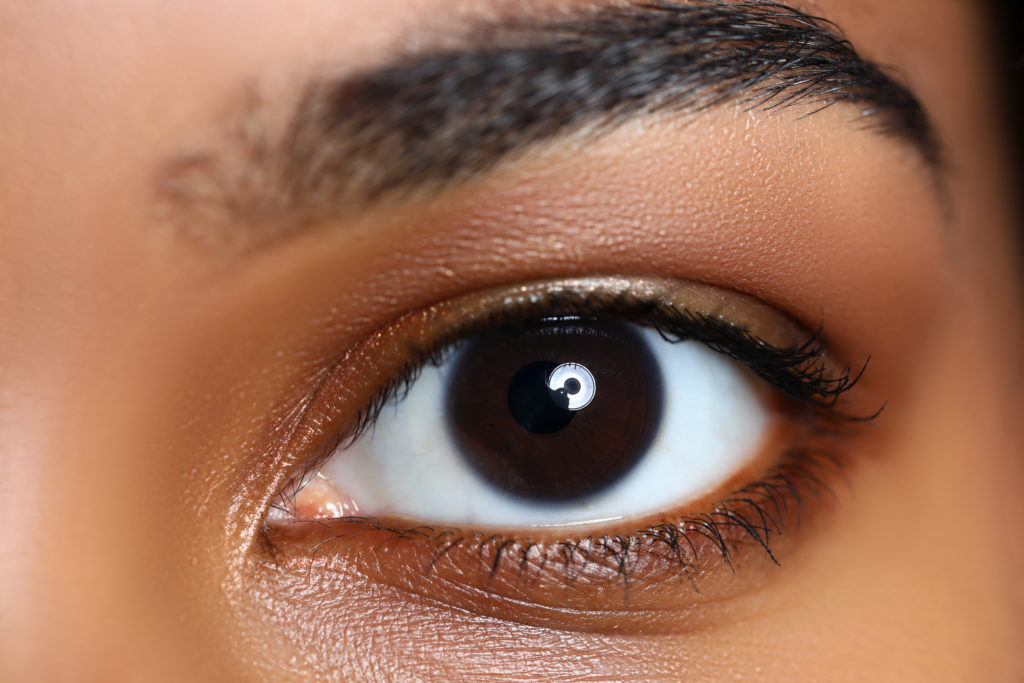
Given there is a large body of research that reveals just how influential eye contact is when it comes to the assumptions, judgments, and perceptions people make about one another, it’s important to give more than, shall we say, a passing glance to how you plan to move your eyes about the room.
Authors, researchers, seasoned speakers, consultants, and trainers vary slightly on the exact amount of time to maintain eye contact with someone in your audience. It appears that a few seconds is the going rate. Or, to translate that into words – a sentence or two. We tend to approach it differently. We’ve found most speakers naturally strike a reasonable balance of how long to maintain eye contact with one person before moving on. If they focus too much brainpower on counting the seconds or tracking their sentences, it can trip them up.
So, instead, here’s a simple rule:
When looking at your notes, your slides, or any other place than your audience, you should not be talking. Any time you are communicating information, you should be looking at an audience member.
And you don’t want to be looking at just one person all the time. It’s important to have effective eye contact in your presentation skills toolbox. In this post , we dive more deeply into effective ways to lock eyes with multiple members of your audience, depending on the type of presentation and venue.
How to Use Facial Expressions in a Presentation
Animated and dynamic speakers know they have a fuller palette of expression to help tell their story when they enlist the more than 40 muscles in their face to move their eyes, nose, brows, and mouth. It is through facial expression that we convey emotions, including seven universal emotions identified by psychologist Paul Ekman through his decades of work. Researchers have found that your audience is likely to make assumptions about you, such as how intelligent, trustworthy, or confident you are, based on your expressions.
Here are some tips on how to better communicate through facial expressions:
Smile. Unless the material requires a more serious expression, smiling while presenting tends to convey warmth and competence, which can help you to connect with your audience. Be expressive. This is not a license to be a mime, but rather, to use your expressions to relay your enthusiasm, your excitement, and to reinforce and support your key points and ideas. Just as presenters are encouraged to expand their vocal range to avoid a monotone presentation, so too is it important to avoid a static expression throughout your entire talk. Observe your audience. Do they look confused? Disinterested? Just as your audience picks up cues through your facial expressions, you too may be able to make perceptions about your audience. (Just be mindful that not every neutral expression indicates boredom or disinterest.) Hone your talent. As with any language, using and practicing it leads to mastery. Nonverbal language is no different. As you practice and rehearse your talk, think about what your facial expressions are conveying and if they are effective. Do they align with your words? Do you appear natural and authentic? Do they support and reinforce your key ideas?

Correct Body Posture During a Presentation
It’s hard to think of a single situation where slouching would be advised – and a presentation is no exception. The correct presentation posture if you are standing is to …
- Square your shoulders with the audience
- Relax your stance. You are not standing at attention!
- Face them directly instead of tilting your body away from them. (The exception to this rule is when you are soliciting feedback from your audience. In that case, turning your body at a slight angle can encourage engagement.)
The correct presentation posture if you are sitting is to …
- Lean forward slightly
- Plant your feet firmly on the floor (avoid crossing your legs)
- Avoid slouching into the chair
Beyond the confidence this posture projects to your audience, researchers have found when you throw those shoulders back or sit upright in your chair, that feeds into your self-confidence , too.
How to Improve Body Language for Presentations
The best way to project body language in a presentation is to be natural. And while it may sound counterintuitive, one of the ways you can appear and feel more natural in your movements is to practice them. This is why it’s important to save some time for rehearsals or practice runs.
Some of the best ways to test your material and your delivery are to record yourself, offer a practice run to an audience of colleagues or friends, and recreate the run-through so that it is as close to the live event as possible.
And, please, this is not the time for harsh criticism. Use this opportunity to see where you did well, such as projecting a confident smile, standing tall, and maintaining meaningful eye contact. Also, look for the areas where you can improve. Did you employ effective body language with your PowerPoint presentation slides? (Here’s are some specific ways to improve your PowerPoint presentation through body language and gestures.)
If you were on a panel, did it appear as if you were slouching? Did you appear nervous or ill at ease? (Here are some ways to counter your fear of public speaking . ) Use this time to hone your skills. Every presentation – whether practice or “live” – is a chance to improve.
Success occurs with preparation, and growth occurs with practice, whether you are a novice or seasoned pro. Here are some specific ways to make the most out of that preparation.
Practice in Front of a Mirror

Record Yourself
There are several reasons that video recording a practice run-through – either with a camera or smartphone – will help your presentation run a whole lot smoother. In addition to tracking such things as your timing, your pace, and the overall flow of your presentation (For example, do you vary the time for each main point? Do you have a mix of message supports, including statistics, stories, and slides?), you also can analyze your body language. Here are some of the things you want to look and listen for:
- The pace, pitch, and tone of your voice and how effective those elements were in conveying your main points.
- How well you maintained eye contact with your “audience.”
- Your gestures and whether they add emphasis to your talk and reinforce key ideas.
- Any mannerisms that are creating distractions, such as pacing in a predictable pattern, fidgeting with your tie or jewelry, or constantly brushing your hair back.
Watch the tape, identify the two or three things you want to improve upon, and do another practice run. If you improve, add another element, and then do another practice run if you have the time.
Learn how to control your body language during a presentation!
Work with our experienced Throughline Group trainers to identify and use effective body language, including energy, gestures, and posture. Sign up today!
Rehearse in Front of Team Members
While a video recording can be an effective way to assess your presentation skills, rehearsing in front of an audience of colleagues is key to getting a feel for the “real” thing. It gives you a chance to assess the nonverbal communication of your audience in real-time, and make the body language presentation fixes that will help you to increase your chances that you are connecting with your audience and helping your messages stick. You can make these sessions more effective in several ways. They include:
Treating your practice like the real thing. Avoid caveats or skimming through sections ( “When I really give my talk, I’ll tell a funny story here.” ) Asking for honest reactions. Your team may be rooting for you, but they need to react honestly if your words are falling flat, your energy is low, or you are spending too much time looking and reading from your notes. Embracing slip-ups, technical difficulties, and distractions. You may be tempted to start over, but plow through any hiccups so you gain the confidence and experience in dealing with difficulties before your talk goes “live.”
( Here are 20 questions you can ask your practice audience. )

Additional Presentation Body Language Tips
Your facial expressions, your posture, and your eye contact are all important elements in your nonverbal delivery. But you have other body language presentation cues that you also can use to make your presentation more effective. Remember, your hands can do some “talking” and your feet can do some walking in the service of your speech.
Hand gestures during a presentation can be used to do many things, including:
- Adding emphasis to a word or point
- Pointing something out on a slide or other visual support
- Reinforcing a concept
In practice, this means you might hold your fingers up for each point you want to make ( “No. 1 is this …” ). Or, with an outstretched hand – palm open – you direct your audience’s attention to a point of data on your chart. Finally, if you are comparing two recommendations perhaps you pantomime a scale with your hands, indicating that one side should win out over the other.
As for movement, unless you must stay tethered to the lectern, make the most of your space. Movement is one way to keep your audience alert and its attention on you. This leads to a more dynamic presentation and better connection with the audience.
When done with intention and confidence, your gestures and your movement – really, your overall body language in a presentation – will help to solidify your credibility, reveal your control of your material and the room, and help you to emphasize your key points.
Here are some specific tips on how to incorporate these additional body language presentation techniques into your talk.
What To Do With Your Hands During a Presentation
You may have been told it’s best not to gesture when speaking, but in our work with clients we have found that speakers become less anxious, appear more natural, and remember and retrieve their words far more effectively when they gesture during their presentations.
And the research backs that up. Gesturing not only adds emphasis and verve to your words but also can help you to better remember what you want to say.
However, there is a difference between gesturing and fidgeting. For instance, when you hold out your hand with the palm facing up when calling on someone during your Q&A, it is an effective and open gesture. It encourages engagement and connection. But, if you are hands are in constant motion, such as clasping and unclasping your fingers, twirling the ring on your finger, picking at your nails, or touching your face or hair, then your gestures can become a distraction.
When gesturing, remember to:
Be authentic. Start with what comes naturally and work from there. Forced movement will be seen for what it is – forced. Be purposeful. Trade fast, undisciplined hand movements during the presentation for gestures with intent. Be open. Avoid gestures such as pointing at your audience, gesturing toward them with your palm down, or crossing your arms – all of which can have a negative connotation or make you appear “closed” off and inaccessible. Be aware of cultural differences. Although certain presentation hand gestures and expressions fall under a universal language, gestures do not necessarily mean the same thing in every culture. For instance, your OK sign may mean just that, but to a person from another country, it might just be highly offensive. (Here’s a look at some of the more common nonverbal faux pas.)
What if My Hands Won’t Stop Shaking?
Anxiety has a way of hijacking whatever veneer of calm you, as a speaker, may have managed to induce before your talk. One of the ways your nervousness manifests itself is through your trembling hands. You may notice the shakiness as you organize your notes or take a sip of water. Most of the time, what you see as full-on earthquakes more typically come across as small-time tremors – if they are noticed at all by your audience. For most people, once the initial jitters ease, those tiny tremors fade. However, if that trembling never eases and you are wondering how to stop shaking hands during a presentation, it’s best to think beyond the symptoms and get to the core of the issue – anxiety. To do that, you must identify the cause of your fear – here are eight causes of public speaking fear – before you can find the techniques that will help you to reduce and manage it .

Photo by Martin Adams on Unsplash
Moving Around During a Presentation: Is That OK?
Movement is one way to keep your audience alert and its attention on you. Make the most of your space and your body language presentation skills so that you can create a more dynamic presentation and a better connection with your audience. What you don’t want to do is pace or create a predictable pattern in how you move around the room. That said, there are several ways you can utilize your space more effectively while walking during your presentation.
Here are several:
Use your movement to emphasize your points . You can begin on one side of the room and share your first, before moving to the other side for Point No. 2. Make your way to the center for your last point. Approach your audience. When answering questions or seeking participation, walk toward your audience. Avoid swaying. If you are standing still, try to avoid rocking from side to side. You can counter this by placing one foot about two to three inches in front of the other.
How You Dress is Important, Too

Here are a few tips:
Choose the outfit that best supports your message, which means knowing the tone you want to set about your topic and who you are. Purchase an iron or get your clothes pressed. You can certainly present in casual clothes, but wrinkles are a no-go in nearly any situation. Consider your accessories carefully. Ostentatious jewelry or lapel pins will probably attract more attention than you want them to. They also could interfere with your microphone. Be wary of fabrics that rustle or shoes that make noises when you move. Not only will that distract you, but your audience will notice it, too.
Sign Up for Public Speaking Skills Training in NYC!
Join our experienced Throughline Group trainers as they guide you on how to use your existing talents, along with the new skills and strategies that you will learn. Sign up today!
This website or its third party tools use cookies, which are necessary to its functioning and required to achieve the purposes illustrated in the privacy policy . If you want to know more or withdraw your consent to all or some of the cookies, please refer to the privacy policy. By closing this banner or continuing to browse otherwise, you agree to the use of cookies.
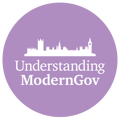
The Importance of Body Language in Presentations

All eyes are on you.
Before you’ve even spoken the first word, your audience can already read how you’re feeling through your body language.
Nonverbal cues are the key indicators of your true emotions. If you’re a nervous presenter, this doesn’t work to your advantage, but fear not, as it is a skill that can be taught and mastered with practice.
We’ll dive into the importance of body language in presenting, which nonverbal cues are most important when presenting and what not to do when all eyes are on you. Plus, how to use body language in sit-down presentations.

- Why is Body Language Important in Presentations
- 5 Non-Verbal Cues to Think About When Presenting
What Body Language Not to Use When Presenting
- Body Language Tips to Rock Your Next Presentation
- BONUS: How to Use Body Language for a Remote Presentation
Why is Body Language Important in Presentations?
In simple terms, body language can make or break your presentation.
Anyone can get up on stage and talk. But it’s how you present and use body language to convey your passion and authority that will keep your audience engaged in the long run. Your body language can reinforce your points and guide your audience towards the next stage of your presentation.
Before you’ve even said the first word of your presentation or speech, it’s likely that the audience has already decided whether they trust you or not.
There are lots of different aspects that go into acing your body language. We’ll go over 5 of them in more detail.

5 Nonverbal Cues in Presentations
Body language is heavily influenced by 5 other nonverbal communication cues that you should be aware of in public speaking – trust us, they make a big difference. These include:
- Hand gestures
- Eye contact
- Facial expressions
Let's get started...
1. Hand gestures
The purpose of hand gestures during a presentation is to make your message clearer, not more complicated. Using the right amount of hand gestures is the key. Overly exaggerated gestures can be distracting but using clear gestures can add impact to your points. For example, using gestures to address certain slides, making contrasts or a numbered list – the combination of visual and audio aids will draw in your audience’s attention.
Show your enthusiasm through controlled and natural gestures, not forced hand gestures that can distract your audience.
2. Eye contact
Have you ever heard someone say, “…you could see the emotion in their eyes”? This isn’t a lie. Human beings portray lots of emotion and feelings in their eyes, so much so that many of us can understand what another person is saying just by eye movements alone. Use the audience’s eyes and body language to gauge their reaction to your presentation – if they look bored, make changes to your tone or try to engage them.
When it comes to eye contact when presenting, aim to use 50% eye contact as you’re speaking and looking around the room intently to show your audience your confidence and interest in the subject. Good eye contact can also help incorporate the audience into your presentation, making them feel part of the process.
If you avoid eye contact, you will come across as nervous. This can make your audience feel uncomfortable and prevent you from forming a genuine connection with your audience.
Top tip: It can be nerve-wracking when the attention is all on you. A common technique often used in public speaking is picking three central spots in the room to focus on. While presenting, look at each spot for 3-5 seconds, and then move onto the next. This gives the illusion that you are making eye contact with the audience without actually doing it.
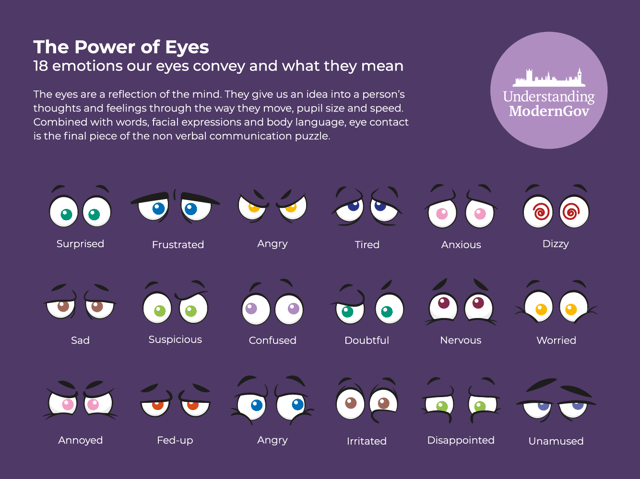
Presentation posture is all about standing tall, chin up and open arms – never cross your arms. This can be tricky if you’re a nervous presenter. But, if your audience can tell that you’re afraid of them, it’ll be hard to win over their trust and full attention.
Stand with your feet apart, shoulders open and naturally relaxed. This will convey confidence and authority and will invite your audience in, instead of pushing them away. Having good posture will also help you to breathe more easily and project your voice further across the room – particularly useful if you’re presenting to a big group.
Here are some effective body language examples for presentation posture:
4. Movement
X marks the spot. There’s an old myth that every presenter should stand still, feet shoulder width apart and just simply speak – almost like a statue. Now, we see some of the best presenters (whether it be during TED Talks or CEO product launches) walking around the stage with confidence and natural energy. We are human beings after all – it’s not in our nature to simply stand still.
It’s easy to get this confused though. The key is not to walk or pace around as if you’re getting your daily steps in. Instead, walk slowly between your key talking points when describing less important details of your presentation.
Use your movements to punctuate your statements and stop to make an impact. Just be sure to match your movements with your presentation slides in the background so your audience isn’t distracted.
Want more body language examples? View our other post on why body language is important in communication for bonus videos.
5. Facial expressions
We, humans, can make over 10,000 facial expressions. When it comes to presenting, your facial expressions can suggest a lot to your audience. For example, a monotone facial expression can suggest a lack of interest or belief in your own ideas to your audience. If you’re not interested in your own words and ideas, you can’t expect your audience to be.
It’s important to fully utilise the power of facial expressions when presenting. Watch the faces of your audience to get an insight into how they’re feeling as you present – then you can make adjustments to your own expressions to keep them engaged. Also, if your audience is a big one, ensure you exaggerate your expressions so everyone can read your face.
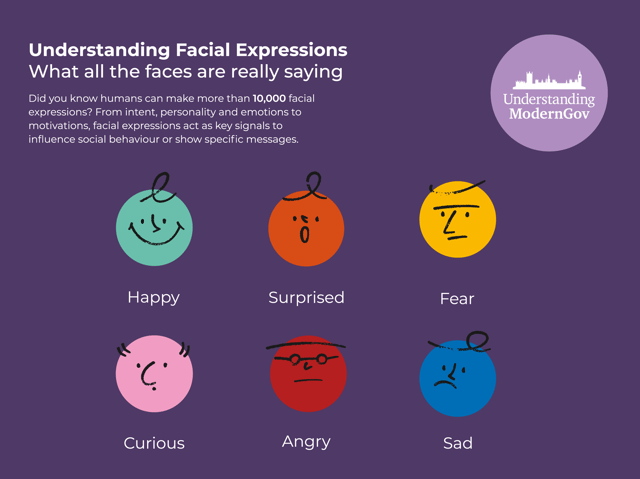
1. Slouch or look uncomfortable
We get it, presenting isn’t everyone’s cup of tea. But sometimes it cannot be avoided, especially if you hold a senior position in the organisation. Your posture tells a lot more about you than you think. Try to stand up straight, take your arms away from your body and relax your shoulders.
Not only will this make you feel more confident, but it’ll also make you look more confident, and it will tell your audience that you know what you’re talking about giving them a reason to believe you.
Watch this video for an example of a good and bad presentation – see if you can spot the differences! Tag us on Twitter at @UModernGov and tell us what you find.
2. Turn away from your audience
Moving around in the right moments of your presentation can be impactful but be sure to not turn your back on your audience at any point. As 93% of communication is nonverbal, turning your back on your audience means you’ve lost the impact of your nonverbal cues, but you’re also making it difficult for your audience to hear you and understand what you truly mean.
It’s okay to gesture to the screen if you’re talking about a specific presentation slide, but make sure to keep your body language open and turn towards your audience to keep the attention on your point.

3. Use too many/over-exaggerated hand gestures
Although hand gestures can be a great way to show your passion for a subject, using too many or overly extravagant hand gestures can be distracting or even off-putting to some audience members. You don’t want them spending their time calculating which direction their arms are going to go in next – you want them focused on your words and presentation.
3 Body Language Tips for Presentations
- Maintain eye contact – No matter how big or small your audience is, look them in the eye. No, we don’t mean staring so much to creep them out, we mean looking at them every so often to create a bond and ensure they are focused on you and your words.
- Use open body language – Avoid closing yourself off. If you’re standing still and tense, your audience will feel this. Using open body language will help you clearly express your message in a positive professional and natural manner.
- Get advice or record yourself to see how your body language really looks – it can be difficult to know how your body language really comes across when presenting, especially if it’s not something you do often. Ask a friend to help you practice your presentation or record a practice run to help you see how to improve your body language.
Use this helpful graphic to understand the body language you use and how you can improve.
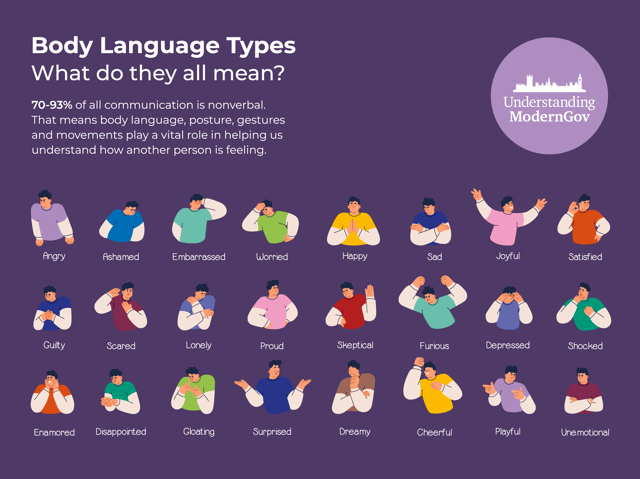
Bonus: How to Use Body Language for a Remote Presentation
Sometimes you might not have the option of conducting a standing presentation. If this is the case, there are things you can do to still promote positive body language to your audience. Sitting down and presenting your ideas or opinions can offer a great chance to be intimate with your listeners. Use this time to engage in natural sharing in a casual and relaxed tone – putting the listeners at ease.
While you might not have the chance to use your full body to show communication, you can still keep your arms open, and back straight, hand gestures natural and use clear facial expressions and eye contact to support your points.
5 Quick Tips for an Effective Remote Presentation:
- Use vocal variety and modulation to increase your personal impact: A monotonous voice is difficult to listen to so ensure that yours is full of vocal colour. Practice by reading out loud and varying tone, emphasis, and pitch and never forget the power of the pause.
- Become an excellent storyteller : Create a narrative for the meeting so that it flows efficiently. Use examples and stories and ask questions to engage your colleagues in order to get buy-in so that you influence effectively.
- Articulate your message with clarity: Ensure that every word can be easily understood by opening your mouth well and using your articulators - tongue, teeth, lips, hard and soft palate - to maintain clarity. Keep your message short and concise to achieve maximum impact.
- Sit "well" and own your space: Ensure your feet are flat on the ground and that your sitting bones are comfortably in the back of the seat. Sitting too close to the screen can come across as being mildly threatening to the viewer. Use gestures with definition, but also with grace.
- Be aware of your physical presentation: Dress appropriately in single-block colours to avoid distraction. Look behind you to ensure the backdrop your colleagues are witnessing is one you want to reveal.
Your Voice and Body Language Go Hand in Hand – Learn How to Combine The Two Effectively
Now you’ve got your body language in check, it’s time to make sure your words follow suit. Take a look at our upcoming Confidence & Resilience training courses to present the maximum impact.
Related posts

What is the Importance of Body Language in Communication?

25 Common Body Language Examples in Action
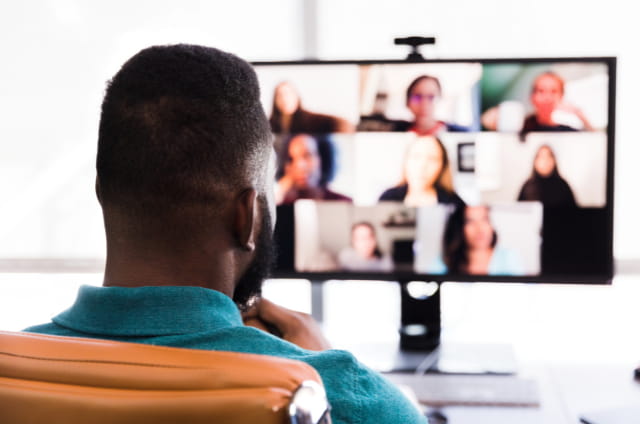
What Your Digital Body Language Says About You | Plus Tips to Improve
17 Body Language Presentation Cues to Use in Your Next Speech
I used to shake, stutter, and simmer during presentations. Now, I confidently own my speeches. Here are my top 17 body language tips for any presentation.
Subscribe to our weekly newsletter
- Why Body Language is Important
- Examples and Meanings
- How to Read People
- Presentation Cues
- Interview Cues
- Workplace Cues
- Business Cues
- Aggressive Cues
- Confident Cues
- Condescending Cues
- Presidential Cues
- Resting Bitch Face
- Advertising Cues
- AI and Body Language
- Facial Microexpressions
- Torso Cu e s
- Shoulder Cues
- Hand Gestures
- Female Cues
- Rules of Attraction
- How to Flirt
Some people may go into a presentation like they’re going into battle.
I was one of those people. But after years of public-speaking experience, dozens of experiments, and hundreds of talks, I can finally say I’ve conquered my presentation fears. And now I want to teach my tactics to you!

Can You Read Body Language?
How good are your body language skills? Take our free body language quiz to find out!
Here is my ultimate guide on what body language to use to give the most captivating presentations . In this guide, you will learn:
- the first thing you should always do when giving an online presentation
- the best way to turn your audience into your friend
- how to use space to captivate your audience
- why Nixon won the heart of voters through the radio, but not on TV (hint: it was his appearance)
- how to use a podium to your advantage
- … and more!
I have been fortunate enough to speak to hundreds of companies , from Google to Intel to Frito-Lay. I’ve also been lucky enough to speak on stages at SxSW, at MIT, and the World Domination summit .
But all of those successes were hard earned. And I started out knowing nothing…
My Presentation Fail
OK, I have a really embarrassing story to admit.
Back in fifth grade, I wasn’t just bad at giving presentations. I was a train wreck : my legs shook, my palms sweated, and I had this really bad condition where my face would just dye itself red from embarrassment.

Fast forward to the most important presentation of the year: I spent an entire month preparing (and even working after school!) for this fleshed-out speech on Columbus’s journey to America. It was full of amazing, captivating content… but unfortunately lacking in delivery.
On the big day, I couldn’t help but feel the sea of stares burning deep into me.
My face reddened like a beet, and I did the only thing my logical brain told me to do… I made a run for it. I literally stopped 5 minutes into my presentation, ran out the door, and hid in the nearest bathroom stall.
That day scarred me forever. I remember wiping tears from my face, wondering how the heck I’d ever get through any presentation again.
Fast forward to today…
- I have talked on stage at well over 100 different events.
- I regularly give training sessions at big corporations like Amazon and Microsoft.
- I even have my very own TED Ttalk!
So yeah, I can say now with a sigh of relief I have (somewhat) conquered my stage fright . Here are my best body language tips I’ve learned from my years of struggle. My aim for you in this article is to give you a boost of confidence the next time you’re giving a presentation!
They might sound small, but they matter.
Signal “Friend!”
So what’s one of the best ways to signal, “Hey, I’m your friend”? Is it:
- show your palms
- give an eyebrow flash
- all of the above
The answer is d) all of the above!
Here’s why these nonverbal cues are so powerful while presenting:
Right when I start a presentation, I like to immediately show my palms. This is absolutely essential to do in video calls since it’s even harder to build rapport than with in-person presentations.
Here’s me, where I show my palms in my TED Talk:
Showing your palms is a great way to signal to others that you have no weapons in your hands. This works because our primitive brains kick into overdrive, worrying that someone may brandish a hidden weapon.
You can even try it! The next time you’re in a conversation, bury your palms deep in your pockets or keep them behind your back. You may notice the other person seems a little unsettled or nervous.
A great way to show your palms during a presentation is to open with a personal story. Personal stories are full of truth and honesty, so you might find your hand gestures naturally opening up (you may not even have to consciously think about opening your palms!).
Give the Eyebrow Flash
The eyebrow flash.
It’s a commonly used gesture in greetings, especially when two people recognize each other. In essence, a quick up-down of the eyebrows shows someone that you’re happy to see them.
Research even shows that it’s used by monkeys and apes, meaning this is likely an inborn gesture.
So here’s the golden rule for presentations: always eyebrow flash when you walk onto stage. Just a quick, up-down of recognition. Couple it with a genuine smile (coming next!), and you’ve got a killer combo that shows you’re trustworthy and friendly.
But be careful of overdoing it—move your eyebrows up -and -down too many times and you’re inviting a different kind of attention!
Use a Genuine Smile
Did you know a real smile includes what is known as the “Duchenne marker,” or wrinkles around the corners of the eyes? Without this key indicator, a person might be faking their smile.
Check out more mouth cues, including licking lips, lip biting, and pursed lips here: 39 Mouth Body Language Gestures
Take Up Space
When we’re nervous on stage, we often go into “deer in the headlights” mode.
We bring our arms in close, keep our feet in the smallest space possible, and bring our shoulders in like a turtle. To give effective presentations, you’ve got to learn how to master your space.
Don’t forget there is space around you! Widen your stance, walk around, use big gestures, and power pose.
- Widen Your Stance. Ask a body language expert what’s the most important body part to pay attention to and chances are, they’ll say the feet. People know what kind of face they’re making. Or what their hands are doing. But they rarely pay attention to their feet during presentations. Avoid standing with your feet awkwardly close. Make sure your feet are at least shoulder-width apart and don’t be afraid to go even wider.
- Walk the Stage. Don’t plant yourself in the room if there’s room available to move around. People pay attention to what’s in motion, so keep moving during your speech to grab attention. One clever way to remember movement is to move with your points—if you have 3 main points, when you switch from one point to another, move to the other side of the room to signal a shift.
- Use Your Arms. Generally, you don’t want huge gestures all the time. But there’s also no need to keep your arms to yourself—use those puppies for emphasis! When you are exaggerating a point, showing a large measurement or data, or talking about something grand, spread your arms and take up space.
- Power Pose. Do you know the power of posing? In a TED Talk, Amy Cuddy explains that power posing can actually increase our confidence. Do this before a presentation to boost your confidence, or do it during a presentation to command attention and feel powerful.
Other than taking up space, another body language presentation trick you can use is to minimize space between you and the audience.
Bridging the distance between you and the audience is a powerful cue to use sparingly.
In the 1992 debate between Bill Clinton and George H.W. Bush, Clinton is asked a question from the audience.
But rather than answering it immediately, he stands up and tries to get as close to the speaker as possible. This little difference allowed the crowd to resonate with Clinton more than Bush, who stood answering questions at a distance.
It was a small change, but it made a world of impact.
Save this for points that really matter to you. When you want your audience to lean in and listen up, move close.
I also do this during question and answer sessions.
Generally speaking, pointing is considered rude… except when you’re presenting with a big screen or projector. If you don’t have a laser pointer or long stick, pointing HELPS the audience by directing their eye gaze at what they should be paying attention to.
Make sure to point at the screen if you think your audience needs a bit more engagement, or during really lengthy and explanatory parts of your slides with text, so they can visualize better.
Raise Your Hand
Remember those times in class when the teacher asked us to raise our hands? Teachers do it for a reason: it increases audience engagement! Whenever you ask a question to the audience, try to spin it in a way to get the audience to participate:
- Instead of asking your audience, “Did you think the Christmas event was amazing?” try asking, “Raise your hand if you think the Christmas event was amazing.”
- You can even spin a statement into a question. If you are stating an exciting fact like “McDonald’s once made bubblegum-flavored broccoli” (totally true, btw!), you can ask your audience, “Which product did McDonald’s once come out with?” and ask for a show of hands for each potential answer.
Since raising our hands is still likely a learned body language that is ingrained in our brains, utilizing this body language cue is a no-brainer to keep the audience hooked.
Read Between the Eyes
Here’s a quick way to boost your perceived intelligence during a presentation: increase your eye contact! Make sure to sweep across the room as you make eye contact with others. Maintaining eye contact is great if you want to build rapport with others. It’s even been found to increase feelings of love and affection!
And forget about the “imagine your audience naked” advice that somehow got popular.… Instead, imagine your audience members are your closest friends.
Imagine your audience are your closest friends. They are there to root for you!
Even if it’s one close friend, imagine you are talking to them. You’ll naturally make more eye contact, your body language will open up, and you’ll be more authentic and honest. No wonder the eyes are the window to the soul.
Side Note: Don’t forget those in the back! Always make contact with every single person in the room, if you can. If it’s a bigger audience, you might want to mentally section-off the crowd in blocks to make sure you make eye contact with most of the crowd.
Laugh It Off
Humor is one of the best ways to turn a dull presentation into a lively one. Who doesn’t love to laugh?
Chances are, you’re not laughing enough.
Research shows that adults only laugh an average of 15 times a day, while preschoolers laugh 400 times 1 https://www.amazon.com/Definitive-Book-Body-Language-attitudes/dp/1409168506 !
It’s not only about feeling good, either. Laughing is actually more about building relationships than reacting to jokes.
That’s why laughter is 30 times more likely to occur in social situations than by yourself!
Laugh more if you want to become more likable.
Verbal back channels, cadence, mumbling, and stuttering—learn more body language tips to give you a boost in your people skills arsenal!
Forward Lean
Sure, everybody knows not to be a slouch: chest up, shoulders back, and head raised.
But did you know adding a slight forward lean to your presentation can increase engagement? Just imagine the last time you were super hooked in a conversation.
Chances are, you were leaning slightly forward:
Body leaning is our body’s natural way of saying, “Wow, this is interesting!” If you see it in your audience? That’s great! And if you do it yourself? You are sub communicating that you’re interested in both the audience AND what you’re saying.
Add a slight forward lean to increase audience engagement.
Use Hand Gestures
Here’s the deal: Research 2 https://www.researchgate.net/publication/234115692_Gesture_use_in_social_interaction_how_speakers’_gestures_can_reflect_listeners’_thinking shows that using hand gestures increases the value of your message by a whopping 60%!
And we confirmed it using science.
In our human behavior research lab, we analyzed thousands of hours of TED Talks and found one striking pattern: the most viral TED Talkers spoke with their words AND their hands.
Want to dive into our research and see which hand gestures to use to WOW a crowd? Click below to find out: 60 Hand Gestures You Should Be Using And Their Meaning
Here’s a self-test you can try out right now: cross your arms.
Which arm appears on top?
Science says that 7 out of 10 people cross their left arm over their right one 1 https://www.amazon.com/Definitive-Book-Body-Language-attitudes/dp/1409168506 .
Crossing arms over your torso is not only a way of defending your most vital organs, but also a form of “self-hug.”
People normally cross arms when they feel defeated or defensive. In presentations, you might find yourself manifesting the arm cross in subtler ways—reaching across the body to fiddle with a watch, adjusting a shirt cuff link, or even adjusting a tie knot.
To counter crossed arms, always default to having your arms relaxed and to the sides when you’re not gesturing. Having your arms to your sides is the most natural position and one that shows you’re confident enough to be relaxed.
Want more cues to arm yourself? Head on over to our guide: Crossed Arms and 17 More Cues to Know
Have you ever been in a presentation where the person giving the speech stands behind the podium the whole time? Podiums are a huge presentation faux pas and effectively block presenters from the audience.
If there’s a podium in the room with you, a personal tip I try to use is to never use the podium for more than a quarter of my presentation. Not only do podiums plant you in place, they also block off half your body.
Here’s a hilarious example of giving a presentation behind a big table… notice how nobody knows what could be going on down there!
Podiums and tables are great as a bounce-back point (if you need to check your notes, change slides, take a sip of water, etc.), but shouldn’t be a nest you coop up in all day.
Keep Cool as a Cucumber
It was September 26, 1960. The entire nation was tuned in to see the first- ever televised presidential debate, featuring John F. Kennedy and Richard Nixon.
Except there was one glaring problem for the Republicans.
The millions of Americans who tuned in could see Nixon sweating under the hot studio lights, while Kennedy remained as cool as a cucumber. Nixon also displayed other signs of anxiety, like lip licking and fast blinking.
So who won the presidential debate ?
It turns out, most people who listened to the debate on the radio voted for Nixon, due to his deep, rich voice.
But those who saw it on the big screen? Hands down, the majority of them sided with Kennedy. During a presentation, people will be able to read a lot from your face. Are you a nervous lip biter? Do you sweat when you’re under pressure? Do you blink too much—or not enough?
Try these tips to master your facial expressions :
- Record Yourself. One of the ways I became much better at public speaking than I was before is that I constantly do YouTube videos . In my early days, I always looked away from the camera and bit my upper lip, until I rewatched my videos and corrected the problems. If you have any glaring issues, video will find it.
- Take a Deep Breath. It’s totally OK to pause and take a deep breath. Make sure to constantly breathe deeply. It’s super easy to get nervous and start shallow breathing. I find a session of quick meditation actually helps me to calm my nerves.
And remember, it can’t be all that bad. Have a look at Colin Robertson’s hilarious TED Talk , where things seem to go awry.
Hide Your Notes
I generally don’t recommend having notes with you if you can help it. Using notes is great to keep you on -pace, but relying on them could be a crutch.
Physically holding them in your hands could take up valuable palm space for gesturing and can make your movements more awkward. You can also forget to make eye contact at critical moments.
I recommend keeping your notes to a bare minimum (i.e., don’t write your college thesis on them) and leaving them at the podium or by your side. Refer to them as needed, but you should be at a place where you only need to look at a few key words to remember what you’re going to say next.
Many presenters already know they should move and take up space. But sometimes it can be easy to over-do it. One powerful, advanced body language trick is to actually keep still and silent during the important parts of your presentation.
Steve Jobs was a master at movement. Watch as he moves to emphasize his points, but during the very important points, he tends to stay still and command attention:
Color Psychology
What colors you wear can drastically affect the perception of you on camera. Just take a look at these 2 different outfits, but with their colors switched:

See how different I look?
One image portrays power, confidence, and authority. The other is perfect for spring picnics and tea time.
OK, those images are a bit on the extreme side. But for normal colors, choose your color to match the mood you want to give off:
- Blue gives off feelings of stability, tranquility, and trust.
- Red primes emotions of intensity, aggression, and passion.
- Yellow indicates emotions of happiness, vibrance, and youth.
Check out this article: Color Psychology: What Colors Should You Wear and Why
News Reporter vs. Preacher
One way to speak is like a monotone news reporter:
On the other end of the spectrum, you’ve got an enthusiastic preacher:
In most presentations, you want to be somewhere in the middle (leaning toward enthusiastic).
Vocal variety is a huge body language cue that you can easily change to spice up your presentations. If you’re not naturally vocally gifted like Freddie Mercury, no worries! Try a vocal warm-up .
One of my favorite vocal warm-ups I do almost every time before a video or presentation is to simply hum:
- Do one long “hmmmmmmmmm,” and try to hold it for as long as you can.
- Now, loosen up your lips and mouth. Hum again, but now more relaxed. Try to keep your jaw and cheeks nice and loose as well.
- Inflect! Go up and down with your hum. Alternate between descending and ascending hums.
Do this five times and be amazed at how magical your newly – prepped voice is.
Remember, your goal as a captivating presenter isn’t just to relay information. You’ve also got a second job as an entertainer. Remember to engage the audience and have fun on stage! Your audience will appreciate it, and you’ll feel more free, too.
Presentation Body Language Mini-FAQ:
How much of a presentation depends on your body language.
You may have heard that communication is 93% nonverbal, and only 7% verbal. These percentages are actually false. We may not know the exact percentage, but nonverbal communication plays a huge role in presentations (with the right body language, you can turn any old, boring content into the most exciting presentation ever!).
Why is body language important in presentation?
Open, confident body language allows you to clearly express your message during a presentation, without disengaging your audience. Great body language during presentations builds your credibility, draws the audience’s attention to your points, and helps you connect with your listeners and build rapport.
Bonus: Give Captivating Presentations
You might not realize it, but you are presenting ALL the time. Whether it’s:
- speaking up in a meeting
- giving an introduction on a video call or joining a conference call
- or even talking on stage
… we are constantly presenting. So I want to help you achieve your presentation goals. Whether you’re looking to find the best openers and closers, use visuals in your presentations, tell amazing stories, or even present online, I’ve got you covered: Master Your Presentations With Powerful Presentation Skills
Are there any other presentation body language tips you have? Or can you relate to my embarrassing story? Leave a comment below!
Side Note: As much as possible we tried to use academic research or expert opinion for this master body language guide. Occasionally, when we could not find research we include anecdotes that are helpful. As more research comes out on nonverbal behavior we will be sure to add it!
Crack The Code on Facial Expressions
The human face is constantly sending signals, and we use it to understand the person’s intentions when we speak to them. In Decode, we dive deep into these microexpressions to teach you how to instantly pick up on them and understand the meaning behind what is said to you. Learn how to decode emotions in our advanced communication course, People School.
Article sources
Popular guides, how to deal with difficult people at work.
Do you have a difficult boss? Colleague? Client? Learn how to transform your difficult relationship. I’ll show you my science-based approach to building a strong, productive relationship with even the most difficult people.
Related Articles
Science of People offers over 1000+ articles on people skills and nonverbal behavior.
Get our latest insights and advice delivered to your inbox.
It’s a privilege to be in your inbox. We promise only to send the good stuff.
🚨 New Course! 25% Off Body Language Mastery 🚨
Unsupported browser
This site was designed for modern browsers and tested with Internet Explorer version 10 and later.
It may not look or work correctly on your browser.
- Presentations
- Public Speaking

Importance of Body Language in Presentations: +How to Use It Effectively
To create a great presentation, you need more than an interesting topic or the perfect PowerPoint template. While those things are important, there is one more element that you need to pay attention to— your body language.

While the presentation template you use is important, effective body language can make all the difference. Learning how to speak body language sometimes increases the chances of a successful presentation.
So, do you know how to stand during a presentation? Or even speak body language as a communication tool? It might feel like magic, but it doesn't have to be a mystery. In this guide, we’ll explain what body language. You'll also learn different types of body language and share body language speech tips that you can use right away.
What Is Body Language?
Body language is the way your body communicates without the use of words. It includes hand gestures, posture, facial expressions, and movements that send messages of their own. Body language can happen consciously and unconsciously.
For example, the way you’re sitting right now paired with your facial expression can tell others a lot about you. Based on your body language, they can tell whether you’re amused or concentrating hard. They can tell whether you’re approachable or if you’re having a bad day.

If you’re in a discussion with someone and verbally agree with them, your body language will likely reveal your thinking. It may either confirm that you indeed agree with what is being said or betray you and tell others you don’t feel the same way.
In other words, your body language reveals the true story behind your words. But you can choose and control your body language with practice.
What Is the Importance of Body Language in Effective Presentations?
Using body language in presentations the right way can help you close more sales or win that pitch. Your body language can help you engage your audience and be confident and relaxed during your presentation. When you make eye contact and maintain a confident posture, your presentation is more likely to connect.
Bad body language can break your presentation. If you aren't aware of it, bad habits like slouching, no eye contact or arms on your hips can stunt your connection to the audience. The bottom line is: don't forget about the importance of body language in presentations.
12 Quick Tips Body Language Tips For Better Public Speaking
Now that we’ve covered what body language is and why it matters while giving a presentation, here are 12 tips that'll show you how to use body language:
Believe it or not, a smile is the most powerful tool you've got in your body language toolbox. A UC Berkeley study from 2011 found
“that smiling can be as stimulating as receiving up to 16,000 Pounds Sterling in cash.”
What’s more, a smile can instantly change the perception we have about someone, not to mention it leads people to smile back at us.

While it’s true that smiling can be hard when you’re nervous, but keep in mind that a University of Kansas study found that smiling reduces stress .
So, the next time you're up there giving a presentation, don’t forget to smile every so often. Not only will you seem more approachable to your audience, but you'll relieve that stress you’re feeling as well.
2. Assume a Power Pose
Professional speaker Amy Cuddy shows that a power pose can help you establish authority. It's a great reminder that body language helps you come across as confident in your content. Check out the pose in action in the video below.

An example of a power pose is standing with your feet a shoulder-width apart, with hands on your hips, and chin lifted up.
3. Move Towards the Audience
As you think of how to stand during a presentation, focus on a positive connection with your audience. As you speak, you’ll likely have one or more key points that you want to emphasize.
As you stand and present, take a step towards your audience when you reach one of these ideas.

Effective body language public speaking tips often share this idea. To be effective, you must connect with your audience. You want each person to feel as though you’re talking directly to them. Take a literal step forward to achieve this goal!
4. Don’t Slouch
Slouching makes you appear less confident and like you’re carrying the weight of the world on your shoulders. If you're physically able to stand straight, then be sure to do so the next time you’re giving a presentation.
Stand tall with your shoulders pulled back and your stomach tucked in—you'll appear more confident and get a quick jolt of energy to boot.
5. Make Use of the Space
Another quick tip is to make use of the stage. Instead of standing still, move around the stage. By doing so, you'll send a message to your audience that you’re comfortable in your skin and confident about your topic matter. It'll also help you avoid fidgeting.

Step out from behind the podium and let your audience see you. Move from one spot to another by taking a couple of steps, stopping, and then taking a few more steps.
Be natural as you move about though and avoid pacing. This will achieve the opposite effect and make you look nervous, not to mention you'll run out of breath.
6. Don’t Be Afraid to Gesture
If you watch other presenters, you’ll notice one thing in common: great presenters use hand gestures as part of their delivery.
Hand gestures will help you stress what's important as well as express feelings and convictions. Your passion for the topic will become more apparent as our gestures are more lively when we're passionate about something.
Watch as speaker Graham Shaw makes effective use of hand gestures and visual aids to explain his ideas.

Hand gestures will show your audience a general sense of enthusiasm for the topic. Don't let them distract but incorporate them to show your engagement.
7. Speak Clearly
It’s not uncommon for nerves to get the better of you during the presentation. This might show up as stutters or mumbles, especially if there are tricky words involved.
Practicing your speech before the presentation is a must! It's a good way to make sure you feel comfortable delivering it and that your audience will be able to understand you.
Another tip that'll help you speak clearly and confidently is to imagine you’re delivering your presentation to your friends.
8. Minimize Nervous Habits
Arms crossed. Feet shuffling. Hands in your pockets. All these are visual tells that you’re nervous. Being nervous is natural! But it can lead to body language that distracts from your presentation. As you practice how to speak body language, work to cut these gestures.

You’ll find that acting confident makes you more confident. Closing yourself off only enhances your feelings of shyness and worry. Effective body language means opening yourself up to engage with your audience.
9. Maintain Eye Contact
As you give your presentation, be sure to maintain eye contact with your audience and face them. Doing so will make them feel like you’re talking directly to them and will help keep them interested in your presentation.
Avoiding eye contact or turning your back to them will come off as rude and break the connection with the audience.
10. Don’t Forget Facial Expressions
Facial expressions can do wonders for keeping your audience interested and convincing them to believe in your cause. Your presentation isn't the time nor the place to bring on your poker face as you'll come off as a robot.
By letting your passion for your topic shine through with your facial expressions, your audience will be able to connect with you and trust you.

You can practice your facial expressions in front of the mirror while you practice your speech. Or, record yourself with a camera and analyze your facial expressions later on.
11. Learn From Other Presenters
The last tip is to learn from other great presenters. You can study their body language and see how they use facial expressions, movement, and gestures to help them convey their ideas. A good place to start is to check out various TED Talks.
12. Remember to Breathe
While you’re on the stage, it can be all too easy to get caught up in your presentation and start to speak fast. But if you speak too fast, your audience will tune out because it'll be hard to follow you and you’ll run out of breath.
As you'll see in the Duke University commencement speech below, Apple CEO Tim Cook uses effective pauses. It helps him to build a steady, comfortable cadence when speaking.

That’s why it’s important to take a pause and remember to breathe. Breathing properly will also help you with your voice pitch and tone so you don’t sound strained and nervous.
Different Types of Body Language
By following the previous presentation body language tips, you'll deliver more effective presentations. But if you want to use those tips successfully, you need to be aware of different body language types.
1. Eye Contact
We mentioned earlier how important it is to maintain eye contact with your audience. Eye contact helps you establish a personal connection with your audience. Keep in mind that you don’t have to look each person in the eye as this can prove to be difficult with large audiences.

Instead, focus your eye contact on a few people in different parts of the room will help you establish and maintain that contact. If they look at you, hold their gaze for a few seconds but avoid staring as long eye contact can make people feel uncomfortable.
Eye contact can also help you get a feel for how the audience is receiving your presentation. If you catch them yawning or trying to stifle a yawn or if they're looking around, it’s a sign they're losing interest in the presentation. Eye contact can help bring their attention back and re-engage them with the topic.
2. Head Movements
The way you move your head can signal a lot of different things. For example, when you lower your head, you send signals such as being tired or waiting for the right moment to speak.
Looking up at the ceiling or away may signal you’re bored or that you’re hiding something from your audience as you’re avoiding eye contact. Nodding signals agreeing with someone.
With the right head body language , you can engage your audience and convince them to agree with your idea.
3. Facial Expressions

Facial expressions help us convey our emotions to others or mask them when we feel uncertain about the person we’re talking to. That’s why using facial expressions during a presentation is crucial.
When it comes to facial expressions, keep in mind that anyone can recognize the seven universal emotions described by Dr. Paul Ekman. One of those emotion is fear, and it can certainly pop up as a presenter. It's important to rehearse to help tame that fear.
Practice your speech and practice giving your presentation in front of a familiar audience first. Once you feel confident about your speech and performance, it’s less likely that fear will show up on presentation day.
4. Hand Gestures
According to a study by Vanessa Van Edwards , hand gestures are one of the five key patterns of all successful TED talks. In other words, the more you gesture with your hands, the better the likelihood of your presentation being a stellar success.
Use your hands to communicate different points in your presentation. The most effective way to do this is to use your fingers to count the points you’re explaining.
5. Body Posture

The way you hold yourself matters. You already know that poor posture such as slouching will give your audience the impression that you’re not confident in your topic or yourself. If your back is tense, they'll sense your tension and wonder what’s causing it.
Remind yourself to relax throughout your presentation and to straighten up if your start to slouch. Not only will this give you the chance to improve your posture, but it'll also allow your audience to take in the points you’ve just covered.
Learn More About Great Presentations
Now that you know more about how to stand during a presentation confidently, you can continue to level up your PowerPoint skills. We've built out a helpful resource, How to Use PowerPoint (Ultimate Tutorial Guide.) This has everything you need to master must-have presentation skills.
Check out these top tutorials from our guide below:
Envato Elements (Design Without Limits)
Need the best resource for creatives today? Explore Envato Elements. Elements has an unbeatable offer: unlimited downloads.
Join Envato Elements today, and you’ll have unlimited use of presentation templates , stock photos, music, and so much more. All these assets are available for a flat monthly rate.
Explore Presentation Templates Now

You can join and begin downloading in moments. Using expertly-crafted assets helps you give the most effective presentation possible. You’ll save time building your presentation. That gives you more time to practice and build confidence. Plus, you’ll have ready visual aids that will wow any audience.
Elements is an offer you just can’t miss. Join now!
Make Use of Your Body Language to Ace Your Presentation
Delivering a great presentation is more than a good topic and strong slide deck. Using effective body language public speaking techniques can really make the difference.
Once you’ve nailed down your topic, make sure you've got a well-designed slide deck. You can save a lot of time by using a professionally designed PowerPoint templates. Choose from one found on Envato Elements or GraphicRiver to speed up your work.
Lastly, don’t underestimate the importance of body language in a professional presentation. Your body language says a lot about you, not to mention it's got the power to help you deliver an engaging presentation. Put your body language to good use with the tips we've shared. Step into space, maintain eye contact, and speak clearly with confidence.
Editorial Note: This content was originally published on May 1st of 2019. It's been updated by Andrew Childress to include new tips and examples to help teach you how to speak body language.

- Communication Skills Two Day Course 9 September 2024
- Leadership Development 16 September 2024
- Presentation Skills Course 16 September 2024
- Coaching and Mentoring Course 18 September 2024
- Negotiation Skills Course 18 September 2024
- Line Management Two Day Course 19 September 2024
- Time Management Course 2 October 2024
- Call: +44(0)20 7226 1877
- Email: [email protected]
- My basket ({{$root.cartInfo.count}})
How To Use Body Language To Enhance Your Presentation Skills

How you physically hold and carry yourself makes a huge difference in how your audience receives your words.
Improve Your Presentation Body Language
As a manager, you know that mastering presentation skills is critical for effectively communicating ideas , motivating your team, and projecting leadership presence. But even if your message is compelling, poor body language can undermine your talk’s impact .
How you physically hold and carry yourself makes a huge difference in how your audience receives your words. Simple tweaks like standing with open posture, using natural hand gestures, maintaining eye contact, and having expressive facial reactions can dramatically boost your ability to captivate and connect with any crowd.
But how can you use all the tips to improve your next presentation ?
In this guide, we’ll help you understand all the small tweaks you can do to improve your presentation style . From building a strong stage presence to making sure that your audience doesn’t doze off , you’ll be able to become a speaker who naturally commands attention and gains trust.
So, let’s see how you can become a speaker that not only informs but also inspires.
Key Components of Effective Body Language in Presentations
Posture – conveying confidence and authority.
Proper posture is crucial for projecting confidence and professionalism while presenting. Stand tall with your shoulders comfortably back and down to achieve an open, grounded stance. Distribute your weight evenly on both feet, positioned shoulder-width apart in a power pose. This occupies space and subconsciously signals assurance and leadership capability. Avoid closed-off postures like crossed arms and legs, which telegraph discomfort or aloofness. Train yourself to stand upright often outside of presentations, as posture habits inform body language cues .
Keep your chin parallel to the floor and your head upright. This levels your gaze naturally to readily meet the audience’s eyes and establish an engaging connection . Periodically roll your shoulders back to keep your chest open if needed. Use torso twists to limber up before taking the stage. Stand with authority by clasping hands behind your lower back. Small posture adjustments like these will instantly lend you greater gravitas.
Hand Gestures – Adding Emphasis and Clarity
Hand motions are a powerful tool to punctuate words and underscore meaning, so use them with deliberate purpose. Open palm gestures fluidly direct the audience’s gaze, highlighting key points without unnecessary flourish. Sweeping hand motions also reinforce ideas spatially and describe size and shape. Avoid overuse of gestures which distract. Keep hand motions above the sternum where the audience can readily see them.
Prevent anxious habits like wringing hands or touching your face. Instead, drill smooth motions originating from the core that emphasise ideas. Calibrate hand gestures to your message’s tone using palm orientation, speed, size and range appropriate to each point. Well-executed hand motions timed to accent important content, clarify the presentation and amplify impact . But use sparingly, only when meaning is enhanced.

Book individuals on our:
Practical Application in Presentations
Integrating body language into presentation preparation.
When preparing your presentation , consciously plan how physical presence will complement the narrative. Script instances to stand tall to convey confidence at key points. Note when expansive gestures could underscore important ideas. Plan for natural eye contact with participants throughout the room. Identify areas where facial expressions might heighten engagement.
Practice fluid transitions between postures and gestures. Appropriately time movements and gestures to sync with speech patterns. Review the video to confirm body language aligns with your intentions. Refine through repetition to eliminate distracting motions and polish physical delivery.
Dynamic Body Language During Live Presentations
While presenting, let body language emerge naturally from the content while adhering to openness, purpose and confidence principles. Avoid remaining static, or you may disengage the audience. Move with an intention to occupy the stage using diagonal crossing patterns. Pivot your torso and stance when transitioning.
Continually scan the room, making eye contact . Use sustained gestures more dynamically when speaking passionately to boost energy and enthusiasm. Allow facial expressions to reflect the speech’s emotion. Respond physically to audience reactions. Adjust pacing, gestures, and proximity as needed to recapture wandering attention. An authentic , dynamic physical presence will keep your audience engaged .
Simple Exercises to Enhance Body Language Skills
Daily routines for better posture.
Building better posture requires daily practice. Set reminders so you periodically stand tall and roll your shoulders back to open your chest. Stretches like overhead reaches target tight muscles that pull shoulders forward. Yoga poses that extend the spine help counteract slouching. Perform exercises like planks to build core strength for a balanced stance.
Use visualisation techniques daily, too – imagine balancing a book atop your head as you walk. Adopt grounded public speaking stances like hands clasped behind your back. The more upright postures become an ingrained habit, the more poised and confident you’ll appear when presenting.
Practice Drills for Effective Hand Gestures
Avoid small, jittery hand motions – instead, drill broad, purposeful gestures that fluidly originate from your core. Rehearse synchronised motions in front of a mirror, timed to match speech patterns. Mark words for emphasis gestures on your script or teleprompter.
Vary gesture size and speed to fit the tone of your message. Watch TED talks and replicate speakers’ effective motions to expand your repertoire. With consistent practice, gestures will become a seamless way to emphasise key points and amplify your presentations.

If you are looking for In-House Presentation Skills Training for a group or teams, please see our
Advanced Body Language Strategies for Presentations
Adapting body language for diverse audiences.
Tailor your body language approach based on audience demographics to increase engagement:
- Research cultural norms on gestures and personal space to avoid miscommunicating with international attendees.
- Adjust formality appropriately for executives versus new hires.
- Adjust gestures to be visible and expressions to be exaggerated if presenting to an audience with visual or hearing impairments. Use simplicity, repetition, and descriptive language.
- Make body language inclusive by scanning the full room with eye contact, not just focusing on leadership.
- Naturally pace stance and gestures to resonate across generations.
Responsive, adaptive physical presence fosters audience connection.
Context-Specific Body Language Techniques
Adjust techniques based on the presentation context. Subtle, confined gestures suit lecterns, while expansive motions engage stage audiences. Convey passion facially and physically for motivational speeches. A CEO may feature formal postures, while an engineer can relax formality for tech demos. Conversational gestures engage small groups.
For video conferences, look into the camera when speaking, then pan side-to-side to show attentiveness. Lean slightly forward on intensifying words. Exaggerate nods, smiles and frowns for clarity onscreen. Contextual mastery makes every talk more effective.
Body Language in Digital Presentation Platforms
Challenges and strategies for virtual presentations.
Presenting through video conferencing poses body language challenges:
- Limited mobility due to being seated and on camera can make presentations feel static and disengaged.
- Distance from the camera may mean facial expressions and subtle gestures get lost.
- Lack of audience visual feedback is difficult.
However, some strategic tweaks can help amplify your virtual presence:
- Stand and gesture when possible to emulate live delivery . Incorporate periodic movement.
- Position the camera at eye level and look directly into it to simulate eye contact.
- Use visual aids like slides or images behind you for audience focus.
- Request audience webcams be on for virtual nods, smiles and eye contact.
Effective Use of Body Language in Video Conferencing
When presenting via video chat platforms:
- Properly position the camera at eye level to emulate eye contact.
- Look into the camera when speaking, then pan to side screens to view participants’ faces.
- Project confidence through purposeful posture and avoid distracting fidgets off-screen.
- Convey energy by varying pace, emphasis gestures, and vocal delivery.
- Use exaggerated facial expressions for clarity onscreen.
- Occasionally lean forward subtly on key points for intensified engagement.
- Send “looking to audience” visual cues before asking questions.
Proper use of virtual body language techniques makes online presentations more dynamic and impactful.

Elevate Your Presentation Skills With Impact Factory
Now armed with evidence-based techniques to amplify your body language impact, it’s time to put these tips into practice. Reflect on your upcoming presentations and identify areas needing improvement. Set goals to integrate one new technique per talk until a powerful physical presence comes naturally. Also, continue observing seasoned speakers to expand your skills repertoire .
For professionals seeking to master presentation skills beyond just body language, our Impact Factory Presentation Skills Training Course offers an intensive learning experience. The program elevates verbal delivery, content structure , audience engagement, and physical presence through hands-on sessions with expert coaches.
The course features modules dedicated to body language mastery, including stance, movement and eye contact for gravitas. However, you’ll also be able to identify your strengths, learn how to become less nervous and make your presentations more engaging.
So, whether you need to pitch ideas within the company, win over new customers, enchant stakeholders in a boardroom or talk to the public and media, you’ll become more confident and learn how to craft a presentation that allows you to reach your goals .
To learn more about our transformative presentation training, browse through our offer of courses or email [email protected]. Our knowledgeable coaches provide personalised guidance to dramatically boost your public speaking capabilities .
Contact us today to amplify your presence and confidence as a presenter.
What are soft skills for body language?
Key soft skills for mastering body language include:
- Self-awareness – recognising your natural gestures
- Empathy – reading others’ nonverbal cues
- Adaptability – adjusting body language by context
- Active listening – paying attention to others’ signals
- Authenticity – using gestures that feel natural
What are the 5 P’s of presentation skills?
The 5 P’s are a framework for excellent presentations:
- Planning – research and outline content
- Preparation – create slides, handouts, notes
- Practice – rehearse delivery out loud
- Presentation – deliver material confidently
- Post-Evaluation – review feedback afterwards
What is the 5/5/5 rule for better presentation?
The 5/5/5 rule suggests:
- 5 key points maximum per slide
- 5 words maximum per bullet point
- 5 text-heavy slides maximum in a row before visuals
This technique improves engagement by simplifying slides and varying content types.

Related Articles:
Here are more resources to help you plan your next steps:
- Presentation Skills Training – Browse through our offer to see what you can gain from the training.
- Presentation With Impact – In this course, you can find your unique presentation style and sharpen your skills to perfection. Explore what our course has to offer.
- Tips To Improve Your Presentation Skills From Industry Insiders – Learn more about small yet impactful tweaks to your next presentation so you can captivate the audience and reach your goals.
- How To Create Impactful Presentation Slides – The days with slides full of barely readable text are long gone. Explore our tips to make your slides more engaging.
Related Articles

10 Expert Tips for Delivering Powerful Business Presentations
- Presentation
Business presentations can make or break deals, inspire teams, and drive change.

How to Prepare for a Presentation: 10 Essential Tips
Effective preparation is an important part of your presentation skills that goes way beyond memorising your slides.

How to Structure a Presentation: Tips for Success
How to structure a presentation? Start with a clear introduction, present your main points, and end with a strong conclusion.
Discuss your requirements
If you like what you've seen, please call us on +44 (0)20 7226 1877 or click the button below to contact us via our contact form.
Privacy Overview
| Cookie | Duration | Description |
|---|---|---|
| __hssc | 30 minutes | HubSpot sets this cookie to keep track of sessions and to determine if HubSpot should increment the session number and timestamps in the __hstc cookie. |
| __hssrc | session | This cookie is set by Hubspot whenever it changes the session cookie. The __hssrc cookie set to 1 indicates that the user has restarted the browser, and if the cookie does not exist, it is assumed to be a new session. |
| __stripe_mid | 1 year | Stripe sets this cookie to process payments. |
| __stripe_sid | 30 minutes | Stripe sets this cookie to process payments. |
| _wpfuuid | 1 year 1 month 4 days | This cookie is used by the WPForms WordPress plugin. The cookie is used to allows the paid version of the plugin to connect entries by the same user and is used for some additional features like the Form Abandonment addon. |
| cookielawinfo-checkbox-advertisement | 1 year | Set by the GDPR Cookie Consent plugin, this cookie records the user consent for the cookies in the "Advertisement" category. |
| cookielawinfo-checkbox-analytics | 11 months | This cookie is set by GDPR Cookie Consent plugin. The cookie is used to store the user consent for the cookies in the category "Analytics". |
| cookielawinfo-checkbox-functional | 11 months | The cookie is set by GDPR cookie consent to record the user consent for the cookies in the category "Functional". |
| cookielawinfo-checkbox-necessary | 11 months | This cookie is set by GDPR Cookie Consent plugin. The cookies is used to store the user consent for the cookies in the category "Necessary". |
| cookielawinfo-checkbox-others | 11 months | This cookie is set by GDPR Cookie Consent plugin. The cookie is used to store the user consent for the cookies in the category "Other. |
| cookielawinfo-checkbox-performance | 11 months | This cookie is set by GDPR Cookie Consent plugin. The cookie is used to store the user consent for the cookies in the category "Performance". |
| CookieLawInfoConsent | 1 year | CookieYes sets this cookie to record the default button state of the corresponding category and the status of CCPA. It works only in coordination with the primary cookie. |
| viewed_cookie_policy | 11 months | The cookie is set by the GDPR Cookie Consent plugin and is used to store whether or not user has consented to the use of cookies. It does not store any personal data. |
| Cookie | Duration | Description |
|---|---|---|
| __cf_bm | 30 minutes | Cloudflare set the cookie to support Cloudflare Bot Management. |
| _hjAbsoluteSessionInProgress | 30 minutes | Hotjar sets this cookie to detect a user's first pageview session, which is a True/False flag set by the cookie. |
| locale | 31 years 8 months 7 days 2 hours | Facebook sets this cookie to enhance the user's browsing experience on the website, and to provide the user with relevant advertising while using Facebook’s social media platforms. |
| Cookie | Duration | Description |
|---|---|---|
| countryCode | 31 years 8 months 7 days 2 hours | This cookie is used for storing country code selected from country selector. |
| Cookie | Duration | Description |
|---|---|---|
| __hstc | 5 months 27 days | Hubspot set this main cookie for tracking visitors. It contains the domain, initial timestamp (first visit), last timestamp (last visit), current timestamp (this visit), and session number (increments for each subsequent session). |
| _fbp | 3 months | Facebook sets this cookie to display advertisements when either on Facebook or on a digital platform powered by Facebook advertising after visiting the website. |
| _ga | 1 year 1 month 4 days | Google Analytics sets this cookie to calculate visitor, session and campaign data and track site usage for the site's analytics report. The cookie stores information anonymously and assigns a randomly generated number to recognise unique visitors. |
| _ga_* | 1 year 1 month 4 days | Google Analytics sets this cookie to store and count page views. |
| _gat_gtag_UA_* | 1 minute | Google Analytics sets this cookie to store a unique user ID. |
| _gcl_au | 3 months | Google Tag Manager sets the cookie to experiment advertisement efficiency of websites using their services. |
| _gid | 1 day | Google Analytics sets this cookie to store information on how visitors use a website while also creating an analytics report of the website's performance. Some of the collected data includes the number of visitors, their source, and the pages they visit anonymously. |
| _hjFirstSeen | 30 minutes | Hotjar sets this cookie to identify a new user’s first session. It stores the true/false value, indicating whether it was the first time Hotjar saw this user. |
| _hjRecordingEnabled | never | Hotjar sets this cookie when a Recording starts and is read when the recording module is initialized, to see if the user is already in a recording in a particular session. |
| _hjRecordingLastActivity | never | Hotjar sets this cookie when a user recording starts and when data is sent through the WebSocket. |
| _hjSession_* | 30 minutes | Hotjar sets this cookie to ensure data from subsequent visits to the same site is attributed to the same user ID, which persists in the Hotjar User ID, which is unique to that site. |
| _hjSessionUser_* | 1 year | Hotjar sets this cookie to ensure data from subsequent visits to the same site is attributed to the same user ID, which persists in the Hotjar User ID, which is unique to that site. |
| _hjTLDTest | session | To determine the most generic cookie path that has to be used instead of the page hostname, Hotjar sets the _hjTLDTest cookie to store different URL substring alternatives until it fails. |
| CONSENT | 2 years | YouTube sets this cookie via embedded YouTube videos and registers anonymous statistical data. |
| hubspotutk | 5 months 27 days | HubSpot sets this cookie to keep track of the visitors to the website. This cookie is passed to HubSpot on form submission and used when deduplicating contacts. |
| UID | 1 year 1 month 4 days | Scorecard Research sets this cookie for browser behaviour research. |
| Cookie | Duration | Description |
|---|---|---|
| cto_bundle | 1 year 24 days | Criterio sets this cookie to provide functions across pages. |
| fr | 3 months | Facebook sets this cookie to show relevant advertisements by tracking user behaviour across the web, on sites with Facebook pixel or Facebook social plugin. |
| i | 1 year | This cookie is set by OpenX to record anonymized user data, such as IP address, geographical location, websites visited, ads clicked by the user etc., for relevant advertising. |
| IDE | 1 year 24 days | Google DoubleClick IDE cookies store information about how the user uses the website to present them with relevant ads according to the user profile. |
| test_cookie | 15 minutes | doubleclick.net sets this cookie to determine if the user's browser supports cookies. |
| VISITOR_INFO1_LIVE | 5 months 27 days | YouTube sets this cookie to measure bandwidth, determining whether the user gets the new or old player interface. |
| YSC | session | Youtube sets this cookie to track the views of embedded videos on Youtube pages. |
| yt-remote-connected-devices | never | YouTube sets this cookie to store the user's video preferences using embedded YouTube videos. |
| yt-remote-device-id | never | YouTube sets this cookie to store the user's video preferences using embedded YouTube videos. |
| yt.innertube::nextId | never | YouTube sets this cookie to register a unique ID to store data on what videos from YouTube the user has seen. |
| yt.innertube::requests | never | YouTube sets this cookie to register a unique ID to store data on what videos from YouTube the user has seen. |
| Cookie | Duration | Description |
|---|---|---|
| _hjIncludedInSessionSample_3525404 | 2 minutes | Description is currently not available. |
| _hjSession_3525404 | 30 minutes | Description is currently not available. |
| _hjSessionUser_3525404 | 1 year | Description is currently not available. |
| country_id | 31 years 8 months 7 days 2 hours | No description available. |
| country_tsp | 31 years 8 months 7 days 2 hours | Description is currently not available. |
| countryId | 31 years 8 months 7 days 2 hours | No description available. |
| i18n_tsp | 31 years 8 months 7 days 2 hours | Description is currently not available. |
| libsyn-paywall-s | 1 day | Description is currently not available. |
| location | 31 years 8 months 7 days 2 hours | No description available. |
| loglevel | never | No description available. |
| m | 1 year 1 month 4 days | No description available. |
| optout | past | No description available. |
| VISITOR_PRIVACY_METADATA | 5 months 27 days | Description is currently not available. |
| visitor-id | 1 year | No description available. |
PHILADELPHIA SEPTEMBER 12-13 PUBLIC SPEAKING CLASS IS ALMOST FULL! RESERVE YOUR SPOT NOW

- Public Speaking Classes
- Corporate Presentation Training
- Online Public Speaking Course
- Northeast Region
- Midwest Region
- Southeast Region
- Central Region
- Western Region
- Presentation Skills
- 101 Public Speaking Tips
- Fear of Public Speaking
Avoid These 4 Body Language Mistakes in Public Speaking

Body language in public speaking is the nonverbal cues that your movements make during communication. Presenters often focus on what they are going to say and their visual aids. However, we often overlook an important part of the speech — body language. Non-verbal communication makes a lasting impression and makes a marked difference in your communication skills. And when it comes to public speaking, if you look poised and confident, your audience will believe you are poised and confident.
In this session, we’ll cover a few simple public speaking ideas that will give you good posture and encourage better body movement. First, we show how important the power of body language is during your presentation. Next, I’ll give you a few, simple tips to look more confident and create a good impression (even if you’re nervous). Finally, I’ll share a presentation secret that, once you understand it, will change the way you look at your nervous habits forever (and in turn, help you give a great presentation).
You Body Language in Public Speaking is Important to a Successful Speech.
When presentation coaches reference body language, they often refer to a 1967 study published by Albert Mehrabian. Dr. Mehrabian is a professor at UCLA. His study showed that only 7% of communication comes from the words spoken. He said that 38% of communication comes from the voice and tone. The final 55% of the communication process comes from body language. In reality, this study has nothing to do with public speaking or presenting. So, the reference to the “Mehrabian Formula” as a reason to focus on body language in public speaking is false. However, that doesn’t mean the power of nonverbal communication isn’t important.
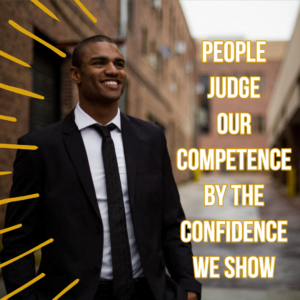
The better that a speaker carries himself or herself, the more credibility the speaker has with the group. If you look timid or nervous, your audience will question your competence. Confident body language has a profound effect on the unconscious mind of your audience. So much so that, even if they know you’re a new speaker, they won’t help but feel turned off by the small details, like a lack of good eye contact and other aspects of body language.
To cover for nervousness, a lot of speakers will avoid negative body language by hiding behind a lectern. Others will deliver their entire presentation from a seated position and make the slideshow the presentation. When you do these things, though, you are losing your connection to the audience. You are also, likely, inadvertently making your presentation more boring.
A Few Simple Presentation Tips to Improve Body Language
If you want to see your ability as a persuasive public speaker improve, try these simple tips. Just testing out one or two of them will show you the real impact of body language.
1. Set Your Screen to the Side, Not the Front
What? What does the screen’s placement in the room have to do with body language in public speaking? Well, everything. Many presenters will set the projection screen or digital screen in the very center of the room. When you do this, though, your ability to move around the room is significantly limited. You’re forced to work in a smaller “stage” to present from, and you’re now off to the side. Your audience didn’t come to see you click through bullet points. They came to hear you speak.
2. Take a Deep Breath and Drop Your Hands to Your Side.
Please don’t misunderstand this tip. The tip ISN’T to KEEP your hands by your side. It’s just the opposite. When you start your presentation with your hands dropped loosely by your side, your first gesture will be bigger and more powerful. This is a powerful tool you can try from wherever you are right now.
Stand up and clasp your hands together in front of your waist as most presenters do. Now, break the clasp and try to make a gesture with one of your hands. Try it a few times. When you do, you will notice that your elbow will tend to rest around your hip. The gesture will look robotic. If you alternate moving your hands from that clasped position, you will likely look like a t-rex. Fearless Presentations , I mentioned in the book that “People judge our competence by the confidence that we show.” This statement is so true.
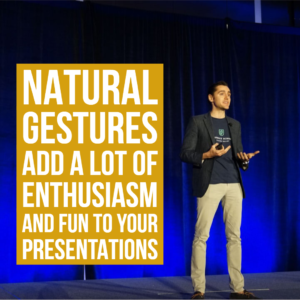
Now, drop both hands to your side and let them hand loosely. Try to make the same gesture that you did before. When you do, you will, most likely end up moving BOTH hands. This time, the gesture will look more powerful and energetic. Also, when you stop making the gesture, you will probably return your hands to your side so that your next gesture is also powerful. (Your hands will often return to their starting point.)
If you’re having trouble remembering to drop your hands to your side, try one of these 3 tips:
Incorporate Slow Breathing and a Relaxed Stance: Begin your presentation with slow breathing and a relaxed body language, keeping your hands at your sides. This not only calms your nerves but also sets a composed tone for your speech. A relaxed physical presence goes a long way in making your delivery appear confident and effortless. Remember, a calm demeanor and tone of voice can make a big difference in public speech.
Practice Purposeful Gestures and Open Palms: When rehearsing, focus on using your whole body to make purposeful and open gestures. An open palm can signal honesty and active participation from the audience. Treat this as a learned skill, where each movement, including returning your hands to your sides, is a part of your physical expression. This technique enhances audience engagement and ensures your gestures complement the tone of your voice.
Visual Cues and Physical Movements Checklist: Create a checklist of physical movements, including keeping your hands at your sides, which you can refer to as an exhaustive list during practice. This list can act as a reminder that each aspect of your body language, from your gestures to your posture, contributes to a great idea being effectively communicated. Regular practice with these visual cues helps in embedding these actions into your muscle memory, ensuring a more natural and engaging delivery.
3. Tell More Stories
If you want to have great body language when presenting, tell more stories. It is almost impossible to tell a story without using your hands to explain what is happening. For instance, when I start my presentation skills seminars , I will often start with a story. Typically, I tell the class what happened to me the first time I had to speak in front of a room of executives. As I describe how my hands got sweaty, I often naturally rub my palms on my pants. When I tell them how I zoomed through the presentation, I move my hands quickly in small circles. These movements add clarity to my description. No one ever taught me how to do this. These gestures happen naturally as I relive the incident from memory.
These natural gestures add a lot of enthusiasm and fun to your presentations. So, if you want to use more poised body language, tell more stories.
Here are some additional tips on incorporating gestures into your presentation:
Mimic the Action : When narrating an event or action in your story, mimic the movement with your hands or body. For example, if you’re talking about opening a door to a new opportunity, physically mimic the action of turning a door handle and pushing a door open. This not only makes your story more vivid and engaging but also helps the audience visualize the scenario better.
Use Symbolic Gestures : Incorporate gestures that symbolize concepts or emotions in your story. If you’re discussing overcoming obstacles, you might show pushing against an invisible barrier with your hands. For stories involving growth or progression, use upward or forward-moving hand motions. These symbolic gestures can powerfully convey abstract ideas and emotions, enhancing the impact of your story.
Avoid Overuse of Gestures : While gestures can greatly enhance your storytelling, it’s important to use them judiciously. Be mindful not to overcrowd your narrative with excessive or exaggerated gestures, as this can distract or even confuse the audience. The key is to ensure that your gestures feel natural and spontaneous, complementing rather than dominating the story. Let your movements flow organically from the narrative; if a gesture doesn’t feel natural or necessary, it’s often better to omit it. This approach maintains the authenticity and impact of your storytelling.
4. Use Your Visual Aid
One of the things that bug me most is when a speaker stands (or sits) clicking a clicker. If you are going to take the time to create a great slide or visual aid… USE IT! One of the techniques that we cover in our speaking class is to visually touch your slide. I know it sounds weird, but it works like magic.
Have you ever been in a presentation where a speaker puts up a series of bullet points and just starts talking? As he presents, you may think he is on point four, but then he clicks to the next slide. This occurs because the speaker naturally assumes that you can figure out which point he is on. As a result, he doesn’t both to tell you when he moves from one point to the next. In most cases, the points aren’t clearly defined, anyway, so there is a lot of overlap. This makes the entire presentation confusing.
A better way is to physically go to the screen and point to bullet #2 when you move to bullet #2. If you combine this technique with telling a story, your presentation comes alive. This happens because the speaker will move toward the screen to identify the next point. Then, she will jump into an example or story to clarify the point. She will naturally move back toward the audience as she tells the story. Of course, as she tells the story, she will use those natural gestures as well. This combination of techniques adds a lot of enthusiasm and energy to a presentation.
A Presentation Secret that Should Help with Presentation Gestures
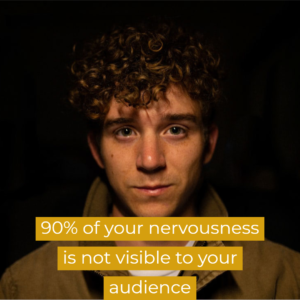
In reality, most speakers feel nervousness. It is just that most of the symptoms they feel aren’t visible either. If you understand this and use a few of the tips we covered earlier, you can look very poised when you speak. (Even if you are nervous!)

Free Public Speaking Tips , Podcasts
View More Posts By Category: Free Public Speaking Tips | leadership tips | Online Courses | Past Fearless Presentations ® Classes | Podcasts | presentation skills | Uncategorized
Looking to end your stage fright once and for all?
This 5-day email course gives you everything you need to beat stage fright , deliver presentations people love , and land career and business opportunities… for free!
7 Body Language Tips to Ace Your Next Presentation
- By Judhajit Sen
- April 25, 2024
Key Takeaways:
- Body Language Impact : Effective body language is essential to improve your presentation, boosting audience engagement and speaker credibility. Maintain a confident posture to create a connection and convey confidence.
- Presentation Mastery : Mastering presentation skills involves minor adjustments in body language, such as an open posture. These adjustments significantly enhance audience engagement and message delivery.
- Body Language Consistency : Body language for presentations should align with the content of the presentation, emphasizing vital points and fostering clarity and persuasion. Being conscious of body language adds authenticity and impact to the delivery.
- Pre-Speech Preparation : Preparing body language to enhance presentations is as crucial as content preparation. Practicing before a mirror or recording helps refine delivery and ensure alignment between verbal and non-verbal communication.
The importance of body language in great presentations cannot be overstated. Using it effectively can boost your chances of clinching deals or winning over your audience. For example, maintaining eye contact helps create a connection and exudes confidence.
Conversely, bad body language can be a deal-breaker. Fidgeting can give the impression that you’re not confident and relaxed. Remember, your body speaks volumes, so don’t neglect to improve your body language in presentations.
Mastering presentation skills is vital for effective communication. Minor adjustments like expressive facial expressions can significantly enhance your ability to engage any audience.
A good presentation isn’t just about what’s on the PowerPoint slides; it’s also about how you use body language to present yourself. Being conscious of your body language adds clarity and persuasion to your public speaking , pitch or project presentation.
Your body communicates even before you speak. How you stand and hold yourself can engage your audience or leave them uninterested. So, alongside perfecting your content, hone your body language skills.
Positive body language is a powerful tool to enhance presentations, demonstrating confidence and gravitas. It’s a skill you can develop to deliver impactful presentations consistently.
In presentations, your audience not only listens but also observes. Effective body language techniques reinforces your message, while poor body language undermines it. Understanding these non-verbal cues is essential, as they form a significant part of communication, often outweighing verbal communication. Therefore, body language is a powerful tool to engage your audience.
The following are seven body language tips for presentations.
Pose with Confidence
To pose confidently during a professional presentation, adopt a power pose to establish authority, such as standing with feet shoulder-width apart, hands on hips, and chin lifted. However, use these poses sparingly to avoid appearing intimidating.
Maintain a stable stance throughout your talk by planting your feet and refraining from shifting which can convey uncertainty. Purposeful movement, such as walking to another area of the stage, should be deliberate and accompanied by brief stops and eye contact with the audience.
Stand tall with your shoulders and face the audience to project confidence and command attention. Avoid crossing arms, which may signal defensiveness, and focus on keeping the lower body still while allowing movement in the upper body to engage the audience effectively. By adopting these confident poses, speakers can convey assurance and captivate their audience without appearing rigid or closed off.
Maintain Eye Contact
Eye contact is crucial in presentations, aiding in audience engagement and establishing a connection. Maintaining eye contact throughout your presentation makes listeners feel directly addressed and keeps them attentive.
To effectively connect with a large audience, focus on a few individuals across the room instead of attempting to make eye contact with everyone. Holding a person’s stare briefly signals attentiveness without causing discomfort.
However, striking the right balance is essential. Avoid prolonged staring, which can make others uneasy. Instead, shift your gaze every few seconds to convey confidence without appearing overbearing.
Nervousness may lead to avoiding eye contact, while excessive confidence can result in prolonged stares. Aim for a middle ground, making eye contact for about two seconds per person and adjusting as needed.
While speaking, transition your gaze to a new listener, maintaining a steady flow of engagement. Avoid sweeping the room aimlessly, as it may convey uncertainty.
Remember, eye contact is a learned skill that improves with practice. Start by focusing on friends and gradually incorporate these techniques into presentations. These simple tips can enhance your presentation delivery and make you a more persuasive speaker.
Use Hand Gestures
Hand gestures play a pivotal role in presentations, aiding in stressing important points, expressing emotions, and exhibiting passion for the topic. They demonstrate enthusiasm and engagement but should not distract from the message.
Research shows that effective hand motions contribute to successful presentations. Use purposeful gestures while speaking to enhance audience connection and comprehension. Utilize fingers to count points, emphasizing important ideas effectively.
Purposeful hand motions punctuate words and convey meaning. Avoid jittery movements, opting for broad, deliberate gestures originating from the core. Maintain motions above the sternum for visibility and clarity.
Practice synchronized gestures to match speech patterns and vary size and speed according to tone. Incorporate welcoming motions to engage the audience positively. Avoid distracting habits like fidgeting or pointing.
Use your hands to gesture symmetrically on essential words, keeping hands comfortably at your side when not in motion. Balance static posture and exaggerated hand motions to maintain audience interest without appearing unnatural or over-rehearsed while giving a presentation.
Employ gestures to clarify messages, engage the audience, and draw attention to visual aids. Use your hands to emphasize vital points and convey energy and authority. Practice and adjust hand motions based on room size for optimal impact.
Use Facial Expressions to Complement Your Message

Facial expressions are crucial in presentations, conveying emotions and building rapport with the audience. Expressing passion and authenticity through facial expressions fosters audience connection and trust.
However, it’s essential to strike a balance. Overly exaggerated expressions may appear insincere, while a blank face can disengage listeners. Stand in front of a mirror and practice facial expressions to refine your delivery.
During presentations, use expressions to complement your message. Expressions can effectively convey enthusiasm, concern, or surprise, enhancing audience engagement.
A smile is particularly powerful. It instantly creates a positive impression and fosters a friendly atmosphere. Incorporating smiles throughout the presentation makes you more approachable and helps alleviate personal stress.
Remember, your expressions play a significant role in communication. Being mindful and aligning them with your message enhances clarity, sincerity, and audience perception of trustworthiness. Adjusting expression size based on audience size ensures visibility and effectiveness.
Improve Your Posture
Posture is pivotal in presentations, influencing audience perception and speaker confidence. Maintaining proper posture projects professionalism and assurance, fostering audience engagement.
Stand tall with shoulders back and down, distributing weight evenly for an open, grounded stance. Avoid closed-off stances like crossed arms, which convey discomfort. Chin parallel to the floor and head upright facilitate eye contact and connection with the audience.
Practice standing upright regularly to cultivate confident body language. Set reminders to roll shoulders back and perform stretches targeting tight muscles. Visualization techniques , such as imagining balancing a book, reinforce good habits.
Avoid slouching or appearing tense during presentations, as these convey a lack of confidence and interest. Relaxation techniques , like deep breathing, help alleviate nervousness. Adapt to suit the audience and setting, maintaining openness and adaptability.
Whether sitting or standing, upright posture sets the tone for the presentation. Avoid slouching or appearing rigid to convey confidence and engagement. Be adaptable to different presentation setups and prioritize an open, communicative posture throughout.
Control Your Breathing and Delivery
When delivering a presentation , it’s easy to get caught up and speak too fast, causing the audience to tune out and leaving you breathless. Staying relaxed during your presentation and stopping to breathe ensures clarity and coherence and helps regulate voice pitch and tone, conveying confidence and calmness.
Feeling nervous or excited before presenting is common, often leading to a fast speech and breathlessness. Remind yourself to relax. Regardless of emotions, maintaining normal breathing rhythms is essential to feel relaxed during a presentation and seizing control of the situation. Controlled breathing allows moments for gathering thoughts and enables the audience to absorb information effectively.
Timing your breathing is crucial. Relax throughout your presentation. Too short, and you may appear flustered; too long, and it disrupts the flow. Incorporating brief silences after delivering a sentence or two establishes a steady rhythm, keeping the presenter and the audience engaged. This rhythmic cadence fosters focus, curiosity, and presenter composure, ensuring a smooth and controlled delivery.
Plan Your Movement

Incorporating movement into presentations enhances audience engagement and energizes delivery. Simple actions like stepping forward or gesturing with hands can reinforce crucial points effectively. However, excessive movement can be distracting, necessitating a balanced approach.
While it’s important to stand still for the majority of the talk to convey confidence and authority, planned movements strategically interspersed with breaks in content can enhance impact. Each movement should accompany a complete thought or point. Avoid pacing aimlessly and create a sense of purposeful progression.
On larger stages, controlled movement can engage different sections of the audience. Clear, purposeful movement around the stage towards or away from the audience can enhance interaction and demonstrate attentiveness to their involvement.
Strategic use of the stage, stepping out from behind the podium, communicates comfort and confidence in the topic. However, natural movement is key to avoiding the appearance of nervousness or distraction. By moving purposefully, speakers can maintain audience attention and convey confidence without detracting from the message.
Maintain a stable stance throughout your talk by planting your feet and refraining from shifting which can convey uncertainty. Purposeful movement, such as walking to another area of the stage, should be deliberate and accompanied by brief pauses and eye contact with the audience.
Mastering Confident Body Language for Impactful Presentations
Body language speaks volumes in presentations, influencing audience perception and speaker confidence. Every movement conveys a message. Effective body language enhances communication, fostering engagement and trust.
Maintaining eye contact establishes connection and authority. Purposeful hand gestures emphasize key points, while controlled breathing regulates speed and tone, ensuring clarity and composure.
Strategic movement adds energy and visual interest, but excessive footwork can distract. Power poses exude confidence, but moderation is key to avoid intimidation.
In presentations, your body communicates even before you speak. Understanding and mastering body language is crucial for consistently delivering impactful presentations. By honing these skills, you can captivate your audience and convey your message with clarity, sincerity, and authority.
Frequently Asked Questions (FAQs)
1. Why is body language important in presentations?
Body language is crucial in presentations as it can significantly impact audience perception and speaker confidence. Maintaining eye contact and confident posture helps establish connection and authority, while purposeful hand gestures emphasize key points. Effective body language enhances communication, fostering engagement and trust.
2. How can I pose confidently during a presentation?
To pose confidently, adopt a power pose sparingly, such as standing with feet shoulder-width apart, hands on hips, and chin lifted. Maintain a stable stance throughout the talk, avoiding shifting or pacing. Purposeful movement, such as walking to another area of the stage, should be deliberate and accompanied by brief pauses and eye contact with the audience.
3. What role does breathing play in presentation delivery?
Breathing is essential for regulating voice pitch and tone, conveying confidence and calmness during presentation delivery. Taking pauses to breathe ensures clarity and coherence, allowing moments for gathering thoughts and enabling the audience to absorb information effectively. Controlled breathing establishes a steady rhythm, fostering focus, curiosity, and presenter composure.
4. How can I effectively incorporate movement into presentations?
Incorporating movement into presentations enhances audience engagement and energizes delivery. Simple actions like stepping forward or gesturing with hands can reinforce key points effectively. However, excessive movement can be distracting, necessitating a balanced approach. Strategic movement towards or away from the audience sustains visual interest and demonstrates attentiveness to their involvement, while natural movement avoids the appearance of nervousness or distraction.
Master Confident Body Language for Impactful Presentations with Prezentium’s Interactive Workshops!
Unlock the power of body language to captivate your audience and deliver impactful presentations. Join our AI-powered business presentation service and interactive communication workshops to refine your posture and gestures.
Learn to establish authority with power poses without intimidating your audience. Discover the art of maintaining a stable stance while strategically incorporating purposeful movements for engagement. Our presentation training programs provide practical tips to enhance eye contact and hand gestures, fostering authenticity and enthusiasm in your delivery.
Don’t let bad body language sabotage your presentations. Invest in mastering confident body language with Prezentium ‘s workshops today, and stand out with confidence in every presentation!
Why wait? Avail a complimentary 1-on-1 session with our presentation expert. See how other enterprise leaders are creating impactful presentations with us.
16 Virtual Presentation Tips and Best Practices for the Workplace
Conference presentation: 10 tips for presenting at a conference, remote team tips: 5 ways to improve remote communication.
Body Language in PPT Presentations: 8 Tips & Tricks
Gestures and facial expressions play a major role in shaping our communication. This also applies to PPT presentations: A presenter’s body language is a crucial factor in influencing the audience’s response to content and key messages.
So, you’ve got great content, slick PowerPoint slides and the latest presentation technology. Don’t forget one of the most versatile and effective presentation tools at your disposal – your body .
If you hide behind the podium, ignore your posture or use awkward gestures and facial expressions, you’ll have no chance of convincing your audience. In this article, we’ll show you eight effective tips and tricks to use body language to your best advantage.
Why body language is so important in PPT presentations

Admittedly , body language is something we tend to use unconsciously — it’s difficult for us to control. Most of the time, we don’t notice that our body language has an adverse effect on our presentation until it’s too late. Nervousness plays a role in this, especially when presenting in front of a large audience. Our hands get cold and clammy, we gesture too much and too excitedly, or we just hide behind the podium.
The wrong gestures can impact negatively on your presentation. Even the most polished PPT presentation will fall flat if we hide our hands in pockets, gesture too much or slouch. Audiences decide within a few seconds whether the speaker is likeable or competent.
Body language and gestures are just as important for a successful presentation as the content itself. It pays to review your rhetoric skills from time to time and brush up on them.
How can facial expressions enhance a presentation?
Facial expressions show the audience how the speaker feels about the content. The more you connect with your content on an emotional level , the more impact your words will have on your audience. With a little practice, you can find the right facial expressions to set the right tone for your presentation.
Tip : Practice your facial expressions in front of a mirror. How do you feel when you smile? Is your smile genuine? Or give your presentation in front of a familiar audience, such as your family or friends. Get honest feedback on your facial expressions and try to incorporate the critique. You can also find many helpful videos online.
How can the right gestures enhance your presentation?

A gesture is a hand or arm movement that expresses or emphasizes an idea. Many presenters know the feeling of not knowing where to put their hands during a presentation. A common awkward reaction is to clasp your hands behind your body or just let your arms hang. This often comes across as insecure, unprofessional and uninspired. Instead, use your hands to punctuate your presentation at specific points and underline key messages . This communicates professionalism and dynamism.
Here’s an example : You present a process in your presentation using a diagram. Leaving your arms hanging down from your body gives the impression that you’re uninterested and unmotivated. Don’t underestimate the power of gestures – use them to your advantage!
With that in mind, let’s go back to the example above . Whenever you explain a new section of the process, point to where you are on the slide. Or punctuate the process itself. If the process went forward, represent this with forward-moving had gesture. If it went backward, make a backward motion with your hands. This shows that you’re involved, energized and professional.
Tip : Again, be sure to practice in front of a mirror beforehand. Which gestures complement your presentation? Do they support your statements? Next, test these gestures in front of family and friends. Make sure to get feedback. You can also find a lot of online resources to help you, for example here .
Here are some helpful tips and tricks for using your body language correctly.
Effective body language during presentations: 8 tips and tricks
The right way to present: sitting or standing.
Are you someone who likes to keep it comfortable and plan to sit during your presentation? Please don’t! When you present, you need to be the literal center of attention . Presenting while sitting will immediately take the focus off you. You’ll appear unmotivated, uninspired and limit how much body language you can use. If you’re sitting behind a table or have your laptop in front of you, you’re basically hiding from your audience.
Stand while presenting. You’ll have freedom to move around and use your body language in a more purposeful way. You’ll appear more animated and motivated. Be aware of distracting objects in front of you, such as tables, and remove them. You want to be fully visible to the audience and not create an unconscious barrier.
Posture: How to stand correctly

You now that you should stand while presenting. Standing – sounds simple, right? Even here, you need to pay attention to a few points:
- Don’t stand with your legs too far apart . This can make you look less elegant.
- Don’t stand with your legs too close together. It’s an easy way to lose your footing and maybe even trip.
- Do stand with your legs about shoulder width apart so you have a firm and stable stance.
Also, stand up straight . Make yourself as tall as possible. Avoid slouching or slumping your shoulders forward . Rocking your upper body back and forth or swaying side to side creates an unsettled effect. What has a positive impact on your posture?
The answer is simple: Self-confidence . Know your presentation topic inside and out and rehearse your presentation several times over. The more familiar you are with your topic, the more confident you will appear . Self-confidence straightens the back.
Keep your head as still as possible while speaking . Raising your head and voice at the end of a sentence sounds like you’re asking a question. And this makes you seem less confident. Avoid nervous hair flicking or touching .
Hands & Gestures

You’re standing up straight with your head held high. What about your hands? As we described above, hand gestures can be game changers during a presentation.
Avoid the following pitfalls:
- Hands on hips: This quickly comes across as unsympathetic or judgmental.
- Hands in pockets: This makes them look insecure and unprofessional.
- Pen in hand: You may find yourself playing with the pen, either unconsciously or out of nervousness. No one wants to hear click…click…click… This can be incredibly distracting. ..click…click… This can be incredibly distracting.
- Crossed arms: It may be a comfortable position for you, but it expresses resistance and detachment. You’ll subconsciously build a barrier and come off as defensive to your audience.
The solution: Use gestures as often as possible to emphasize statements. Don’t worry about how often you should gesture. Feel free to use your hands whenever you feel it’s necessary. A good neutral position is with bent arms and hands at belly-button level. Leave a space between your elbows and torso when gesturing . This makes you take up more space and appear more confident. You can find more tips here .
Gear the use of gestures to the size of the audience. Smaller groups require “quieter gestures” . Raising your arms will quickly look artificial. The three-joint rule helps to correctly identify which gestures to use:
When speaking to a smaller group, use hand gestures , the so-called “quiet gestures” we mentioned above. With 20 to 30 people, the elbow, the second joint, should move the most . This creates “loud gestures” . Use the shoulder, the third joint, in front of a large audience only . These “louder gestures ” can be used to emphasize a point right to the back of a large room.
Gestures attract attention but don’t go overboard. Use your gestures strategically. The audience will follow your hands and be interested in what you have to say.
Walking around
Everyone who presents has faced the question, ” Can I move around, or should I stay in one spot?”. Here’s the answer: you can do both. But there are some rules to follow in both cases. Here’s one: Avoid walking back and forth all the time – give your movements intention and meaning . For example, move after you’ve made a statement or finished a section. Or when you want to explain something from a different point of view .
Eye contact

Eye contact with an audience is key to a good presentation. Maintain eye contact with each audience member, but only one person at a time. Why? Most of us get nervous when we have to speak in front of several people. Our gaze moves from one audience member to the next, we wonder what they’re thinking — and we become insecure.
If you concentrate on only one person at a time, it will feel like you’re having a one-on-one conversation. Much less intimidating than addressing a large crowd at once, right ? In addition, each audience member will feel like you’re speaking to them directly – a positive and personal interaction that guarantees you’ll have their attention.
Keep in mind that if the room is large and at capacity, you’ll probably not be able to make eye contact with everyone present. In this situation, divide your audience into sections : front, center, back, left, right. Fixate on one person from one area and then another from the next area. Once you have made eye contact with one person from each area, start again from the first section.
You can also support your key messages by slightly lowering your chin at the end while maintaining eye contact with your audience. This will add weight to your statement and the audience will find you more credible and competent.
The right facial expressions

We’ve already described how facial expressions a major role in presentations. Here are some additional points to think about:
- A genuine smile always makes a good impression. Particularly when welcoming your audience, it can help you create a friendly, pleasant atmosphere.
- Use a neutral facial expression when presenting facts , such as figures and data. Emotions will seem out of place here.
- Emphasize important points with raised eyebrows and open eyes . A smile can also enhance the effect.
- If you have to present less-than-optimal data or results, pull your eyebrows down and squint your eyes a bit. This clearly signals a negative emotion.
- When you make a rhetorical pause or lose your train of thought, make sure that you keep your mouth closed . This will make you appear calm and confident. Breathe calmly and continue the sentence you have started.
Here’s a fun video about the science behind smiles and how to smile more effectively.
The right outfit
Ever heard the saying, “Clothes make the man (or woman)?”. We all know looking good is important, but did you know that your choice of outfit can directly affect your body language ? Choose something comfortable but at the same time is appropriate for the occasion (no sweatpants!). If you’re not a suit-and-tie guy, don’t decide to become one for your presentation. You’ll be uncomfortable and won’t be able to present confidently.
As for women: Sure, high heels look elegant, chic and businesslike. But make sure that you can walk in them if you want to wear them during your presentation. Nothing is worse than an unsteady gait or even slipping or falling. Think about your footwear!
Avoid wearing clothes that are too colorful or garish . This quickly distracts from your actual presentation and may even make your body language look funny. Coordinate your clothing with your background so that you don’t “disappear”.
Before you start your presentation, check that your clothes fit . Are all buttons closed? Is the zipper of the pants closed? This will allow you to go into the presentation with confidence, which will only benefit your body language.
Finally: Other countries, other body language
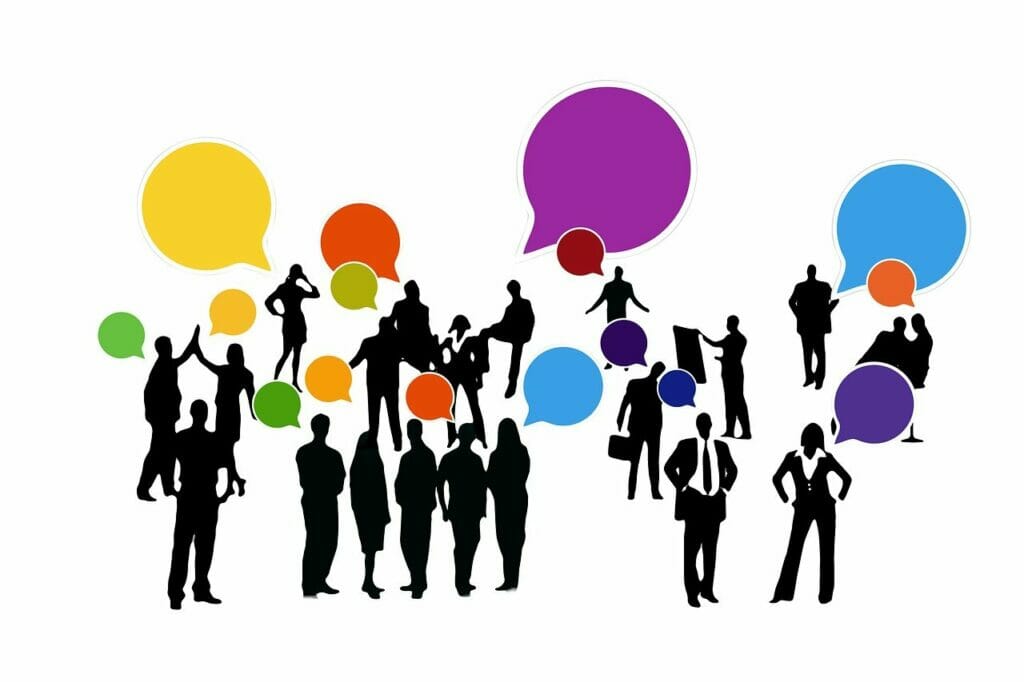
If you’re planning an international presentation, remember that your body language must be understandable to everyone . Learn about potential cultural differences between the body language you’re familiar with and what your audience understands.
Score points with the right body language in your PPT presentation!
Body language is a presentation tool which shouldn’t be ignored . Most of the time, body language happens naturally. Nevertheless, it’s important to focus on the right body language , especially during important presentations. Without a bit of forethought and practice, you can quickly come across as boring, awkward, unmotivated or unprofessional.
Use our tips and think about how you can incorporate them into your presentation. Don’t hesitate to practice in front of a familiar audience and ask for feedback. With practice, you’ll be able to perfect your body language and get the best results from your presentation . A good video summary on body language in presentations can be found here .
Extra tip: Here are some tips for online PPT presentations or when you have to present wearing a mask .
We’re happy to help you with and questions about body language, general questions about presenting or PowerPoint presentations themselves. Feel free to contact us at [email protected] .
Share this post
- share
- save

Design Thinking: Problem Solving with a Difference

Why Corporate Mission Statements Are So Important

7 Tips & Learnings from the Apple Keynote
Newly Launched - AI Presentation Maker

Researched by Consultants from Top-Tier Management Companies
AI PPT Maker
Powerpoint Templates
Icon Bundle
Kpi Dashboard
Professional
Business Plans
Swot Analysis
Gantt Chart
Business Proposal
Marketing Plan
Project Management
Business Case
Business Model
Cyber Security
Business PPT
Digital Marketing
Digital Transformation
Human Resources
Product Management
Artificial Intelligence
Company Profile
Acknowledgement PPT
PPT Presentation
Reports Brochures
One Page Pitch
Interview PPT
All Categories
7 Dos and Don'ts of Body Language to Enhance Public Speaking

Hanisha Kapoor
Did you know: 60-65 percent of all human communication is nonverbal? Even when a person is standing still, a person’s body is telling a story.
Yes, your body can strongly put across your message than the words. And in some cases, your body language and words just don’t match.
Then what happens?
You contradict yourself, put yourself in a bad light and make it worse for your audience to comprehend you.
Don’t let this happen to you.
Escape from the bad body language habits to enhance your message.
Are you looking to conduct a training to educate your team or colleagues on effective business communication? Click here to access our Comprehensive Training Curriculum On Business Communication to ensure you are ready to hit the ground running!
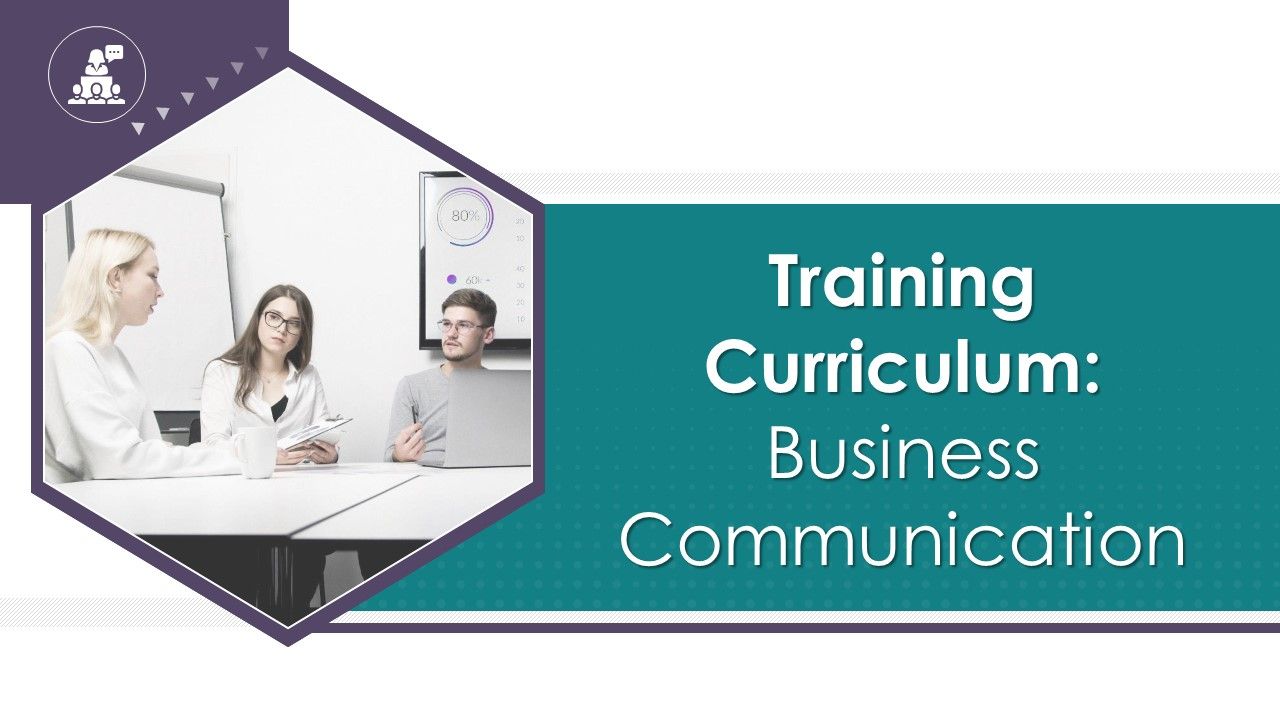
Click here to access the Comprehensive Training Curriculum On Business Communication
Here we are going to tell you 7 don'ts and 7 dos while you are on the stage delivering a presentation or speech to make sure your body language is as good as your content.
Don’t Ever:
1) Fold hands/arms : It indicates that you are unenthusiastic about the speech or the presentation. You are not open to others and their ideas. Folding arms could imply that you may have gone into your shell and you are uncomfortable in the presence of others.

2) Look down or off into space : You are on the stage with purpose. You are not there to talk to the ceiling or to the floor. If you look down or off into the space, it shows that you are not interested in the audience, or in the whole idea of being there.
3) Jiggle legs : Reason why people shake their legs is restlessness. Either you are unprepared or you just got bored of the situation. Either ways, you jiggle your legs. Better go prepared and add some humor to your presentation so that you don’t let yourself and your audience get bored.
4) Fidget with objects : Clicking pens, playing with paper clips may show you as impatient, bored, nervous, and restless. Not just this, audience will end up seeing you fidgeting and will not pay attention to what is being said.

5) Turn your back to the audience : When you do it, you bore them. As a result, you lose them. You portray as if you don’t care about them.
6) Roll eyes : This is a way of telling your audience that you don’t respect them. Or that maybe you are lying. Of course, we are not saying that you are a liar. But you might come across as one if you do so.

7) Hold objects in front of your body : You are separating yourself from others. You immediately create a bridge between you and your audience when you cover your body. Your entire body is visible to the audience when you are standing. They can communicate well with a standing person. In case, you have to sit, make sure you don’t cover your body with unnecessary stuff such as files or books in your hands. Just sit straight and talk.
1) Make eye contact : Always make an eye contact with your audience. Eye contact represents that you are interested in the conversation. It shows that you are speaking information, showing attention and interest. When you look your audience in the eye, they will in turn pay more attention to you and to what you are saying because they will feel engaged and a part of your conversation.
2) Open arms : Keep your arms open. Open arms display that you are confident about your content. You have a confidence in your message. Also, you are open to new ideas. You are not a threat to your audience. You would like to indulge in the conversation with your audience.

3) Mobility : A little movement is necessary during the presentation. Do not just standstill at one place. Use the stage while speaking to keep the environment active and positive. Walk towards the audience to encourage them to participate in the conversation.
4) Face expressions : Face expressions are an integral part of any speech. Face expressions alone can make your audience understand the meaning of the message. Let your emotions come out while saying each word. It shows that you mean them. Your audience will immediately connect with you.

5) Power Posing : Make your speech more effective by adopting power posing. This is not something you have to do whilst the speech is on. Try power posing before the speech for effective results. According to the social psychologist, Amy Cuddy, power posing can make us feel more powerful, strong and secured about ourselves. Simple postures such as “hands on our hips and arms in V” can boost our confidence level.
6) Open palms or be hands on : Talk with the palms open. It is a sign of honesty. Closed palms indicate that you are hiding something and come across as a threat to your audience. Avoid keeping hands in your pockets or by the side. Rather use hands gestures to emphasize your words.

7) Smile : There is nothing better than smiling. It shows that a person is credible, confident, and trustworthy. It exudes positivity and charm about the person who is delivering a speech.

Adopt these body language tips to enhance your public speaking.
Now you are aware of what you should avoid doing on the stage and what you should always do to make your stage presence a hit.
And always remember to smile.
Looking for innovative PowerPoint Slides Design? Let us help you. Contact our Presentation Design Agency to ease your work.
Related posts:.
- Elon Musk’s Top 10 Most Influential Presentations
- 13 Powerful Ways to Kickstart Your Presentation or Speech
- 12 Best Business Conversation Templates for Productive Meetings
- Top 10 Corporate Ethics Templates to Eliminate Business Malpractices
Liked this blog? Please recommend us

Become a Pro at Public Speaking: 11 Public Speaking Tips for the Beginners

5 Public Speaking Lessons from the World’s Top 5 Orators of Today
8 thoughts on “7 dos and don'ts of body language to enhance public speaking”.
This form is protected by reCAPTCHA - the Google Privacy Policy and Terms of Service apply.


Presentation Training Institute
A division of bold new directions training, 5 body language mistakes to avoid while presenting.
Much of your impact as a speaker depends on your body language. These non-verbal movements can make or break your presentation. Oftentimes presenters focus only on what they are going to say and forget about what they might be saying with their body language. When you are presenting, strong, positive body language is an essential tool for helping you to build rapport and credibility with your audience. When all eyes on are on you it is important to avoid those body language mistakes that can send the wrong message. Here a few body language mistakes that can be fatal when giving a presentation.
Crossing Your Arms
When you cross your arms you are displaying a defensive posture that signals resistance. This creates a distance between you and your audience. It also gives the impression that you are unenthusiastic about your presentation.
Hand Movements
One of the most difficult body gestures to control during presentations is hand movements. Fidgeting with your hands can be distracting to your audience and it can cause them to lose attention. When you hide your hands behind your back or place them in your pockets it can display nervousness or insecurity. Clasping your hands or waving them can indicate that you are insecure or unsure about what you are talking about. Inappropriate hand gestures can cause you to lose credibility by giving off the impression that you do not believe in what you are saying.
Avoiding Eye Contact
Presenters often neglect to make eye contact with their audience. They tend to look down at their notes, stare blankly into the back of the room, look down at their feet, or check the time on their watch. Avoiding eye contact makes your presentation seem unprofessional and impersonal. Eye contact is one of the most important elements when it comes to connecting with your audience.
Awkward Body Movements
Swaying back and forth or walking back and forth across the stage can make your audience feel nervous and awkward. It gives the impression that you are nervous or uneasy. You do not want to stand in one place for the duration of your presentation, but your movement should have a purpose. Walk around to captivate audience interest as opposed to moving just to have something to do with your body.
Forgetting to Smile
Unless you are delivering bad news to your audience it is appropriate to smile during your presentation. In fact, smiling will make your audience more receptive and it will show that you are confident, at ease, and enthusiastic about what you are presenting. When speakers forget to smile, they give off a negative vibe and are less likely to make a good impression with their audience.
Body language is one of the most important aspects of giving a dynamic presentation. It is a form of non-verbal communication that will convey a message of either confidence or insecurity to your audience. Avoid these common body language mistakes in order to deliver a great presentation that will wow your audience.

- Theater-Based Techniques
- Dr. Gary Genard
- What Our Clients Say
- Client List
- Dr. Genard in the Media
- Leadership Communication
- Fearless Speaking
- Voice and Speech Improvement
- Presentation Coaching
- Speaking Virtually
- Presentation Skills
- Executive Speech Coaching
- The Benefits of Deep Breathing
- How to Calm Your Nerves Before Speaking
- Leadership Skills: The 5 Essential Speaking Techniques
- 5 Ways to Captivate an Audience
- The Body Language Rules: 12 Ways to be a More Powerful Speaker
- 4 Characteristics of an Influential Speaker
- 6 Skills Building Exercises for Effective Body Language
- 7 Tips for Overcoming Audience Resistance
- 5 Rules for Succeeding with PowerPoint
- Great Speaking? – It's About Performance Over Content!
- 5 Key Tools of Vocal Dynamics
- 5 Secrets of Powerful Body Language
- 10 Ways to Stay Fully Focused when Speaking
- 25 Words or Phrases to Avoid in Speeches and Presentations
- 6 Rules of Effective Public Speaking
- 7 Key Components of Successful Presentations
- 12 Easy Ways to Achieve Presence and Charisma
- 6 Skills Building Exercises Video
Gary Genard's
Speak for success.
"Be a voice not an echo." - Albert Einstein
Negative Body Language: 7 Deadly Sins of Nonverbal Communication

Negative body language in public speaking hurts your credibility. Read this to see if you're guilty of the ‘7 deadly sins’ of nonverbal communication.
Body language is fascinating, isn't it? We're all intensely interested in knowing what another person's gestures, facial expressions, and postures mean. You don't have to be a body language expert to find yourself asking these questions:
What does that gesture signify?
Is he or she responding positively to me?
Am I seeing truthfulness or lying?
Is any of this nonverbal behavior reliable information?
Discover how to boost your impact and persuasiveness! Download my free guide , "The Body Language Rules: 12 Ways to Be a More Powerful Speaker."
Body Language Is Key to Nonverbal Communication
If you're that interested in what other people reveal in terms of their intensions and motives, think about that from the opposite direction. What about when you're the one interacting with others, especially in a speech or presentation? Naturally, your audience wants to know these things about you :
- Are you trustworthy?
- Is what you're saying credible?
- Do you have the audience's interests at heart rather than your own?
- Are you a confident speaker?
- Can they believe in your message?
The list is actually much longer. What it all comes down to is how you're coming across to that audience, and whether your message is resonating. Clearly, you need to use body language powerfully to be credible and persuasive in the eyes of your audience. It's a central part of my free guide , 6 Rules of Effective Public Speaking .

The 7 Deadly Sins of Nonverbal Communication
Remember: audiences will make decisions about you based in large part on what you're showing them. That includes what I call "negative body language." Broadcasting any of these "cardinal sins" is guaranteed to undermine your credibility and influence.
If you see your own behavior flagged in any of the "7 Deadly Sins of Nonverbal Communication" below, it's time to take stock. Learn more about how to be an effective business speaker —which includes using body language that helps rather than hurts your cause!
#1. Poor stance or posture.
#2. avoiding eye contact., #3. creating a barrier that shuts out listeners. .
This sin has many variations. Standing with arms crossed. The fig leaf position with the hands 'protecting' the crotch. Creating a church steeple with one's fingers. "Washing" one's hands while speaking. With every one of these practices, the speaker is creating a physical barrier between her or him and listeners. To avoid them, simply start with your arms at your sides, and bring them up to make a gesture when you need to. That will really amplify what you're saying.
#4. Unproductive use of space.
Believe it or not, it's easy to over-emphasize gestures and ignore using space! Public speaking audiences expect a performer, not a statue. In fact, it's your job to know how to use body language to command space . Using different parts of the stage tells an audience you're comfortable up there. If you stand in a different spot for each of your main points, listeners will retain each one of them better. Here are 5 acting techniques to improve your stage presence in public speaking .
#5. Employing weak or repetitive gestures.
"What should I do with my hands?" is a frequent question of anxious speakers. The answer is simple: gestures should be essential to what you're saying. As Hamlet put it, "Suit the action to the word, the word to the action." If you keep that thought in mind, it should actually become difficult to use too many gestures, since any one gesture couldn't possibly fit that many expressions! The other half of this equation is the power and spareness of the gesture. Each one should be strong, clearly support the phrase or idea, and end cleanly. Want to know more? Here's how to use gestures to be a strong speaker .
#6. Relating negatively to listeners.
You've seen speakers accomplish this remarkable feat: Rather than cultivating influence with an audience, they antagonize them. Negative facial expressions ; nodding impatiently at a questioner so they'll shut up so you can answer; pointing a stiff finger at the next unlucky questioner. Even looking at the floor as you ponder your momentous reply—these behaviors seem to say, "I'm really not enjoying having this dialogue with you." Pretty soon, of course, the audience will feel the same way.
#7. Clumsy use of objects.
You've seen plenty of examples of this one: the whiteboard or flip chart marker held but never used; the piece of chalk tossed into the air during a lecture; or the microphone held in a gesturing hand. There's even a dangerous version: laser pointers whose beams dance across audience members' faces! Like actors with props, speakers need to use objects rather than being used by them. As a minimum exercise in mastering objects, come out from behind a lectern whenever possible. A lectern is the worst item of all because it's a physical barrier between you and the audience. For that reason, I call it one of the "Devil's Tools."
This blog was first published in 2017. It is updated here.
You should follow me on Twitter here .
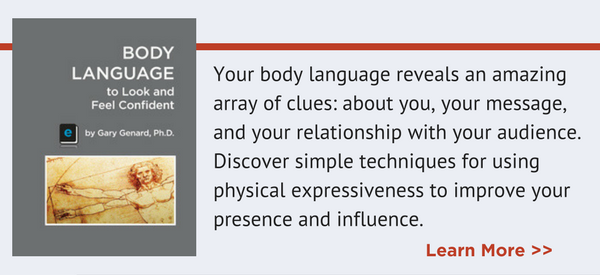
Tags: public speaking training , body language , gestures , body language tips , body language techniques , secrets of body language , body language errors , body language secrets , emotional intelligence , influence , body language mistakes , charisma , presence , The Genard Method , Dr. Gary Genard , negative body language , 7 deadly sins , body language and public speaking , how to read body language , reading body language , effective body language , body language expert , social intelligence
Subscribe to Email Updates
Subscribe to the blog, follow gary genard.

- Training Techniques
Main Office - Boston
[email protected] 617-993-3410
- Executive Presentation Skills
- Rehearsal & Preparation
- Group Presentation Skills


Microsoft 365 Life Hacks > Presentations > How to use body language effectively during your presentation
How to use body language effectively during your presentation
Understanding grammar basics will make you a better writer, and mastering prepositional phrases is key. To improve your writing and communicate clearly to your audience, know what prepositional phrases are and how to use them correctly.

Your body has something to say
Body language is a powerful form of nonverbal communication. Whether you’re talking with a friend or waiting for a bus, your body is always sending signals out to those around you. During a presentation, when all eyes are on you, the importance of body language is heightened. Here’s some key areas to be aware of:
- Your facial expressions. You can heighten or emphasize your message as you speak or pause with subtle movements such as raised eyebrows or larger expressions such as a smile.
- Your hands. Your hands might be at your sides, in your pockets or gesturing to illustrate a point or your material. Each position conveys something different to observers.
- Your feet. Are you staying in one place, shifting your weight from foot to foot, or walking around? How fast are you walking? Those are potential clues to your feelings in the moment.
- Your position. How close are you standing to others? Are you standing straight or slouched slightly. Are you in front of, next to, or behind your materials and visual aids? During a presentation, position is key—try standing in front of a projector and see if your message gets across.

Tell your story with captivating presentations
Powerpoint empowers you to develop well-designed content across all your devices
Making body language work effectively for you
If you think about the areas above, you can probably think of strengths and challenges you have with each. Maybe you tend to “talk with your hands” or shrink away from your audience because of presentation anxiety . These tips can help you remember what to focus on and help you overcome some of your natural tendencies that might be distracting your audience. You’re the area of focus, so whatever you do will have a disproportionate impact on those watching.
- Smile. Smiling can help you feel more confident in the moment and eventually raise your level of happiness. Plus, you’ll look more approachable and even glad to see your audience, no matter if you’re still a bit nervous. Of course, if your content is more serious or has a moment where the tone changes, make sure your expression is appropriate for what you’re saying. But a slight smile that says, “I know what I’m talking about, and I want to share it with you” is generally a good default face to have.
- Shift your gaze. It’s totally ok if you’re still at the “look above the audience’s head” stage of presenting, and eye contact is less important in virtual presentations , since you need to be focused on the camera. But if you’re in person and you’re able to direct where you look, doing a slow pan glance over the crowd, or finding a few friendly faces to periodically zoom in on, can help provide that important illusion of confidence and strengthen your connection to the audience overall.
- Think about when you want to gesture. Don’t be afraid to gesture but try to choose gestures that will emphasize your language or your topic in any given moment, rather than wildly waving your hands about. Controlled gestures are a very effective tool, as your audience’s eyes will follow your hands—but not if they realize your hands are going nowhere most of the time.
- Be open and try to stand up straight. Have your shoulders tilted toward the audience rather than away to convey your desire to connect with them. Also, avoid slouching, which can also project a lack of confidence in your words or material, and instead try to subtly point your chest toward the crowd, as if you’re leading with your message. And try to be rooted but ready, not shifting from side to side as you speak.
- Control your pace. While you can stand in one spot while you present, it’s sometimes more impactful to be able to move around slightly when illustrating a point or perhaps telling a story. Try to move slowly and with purpose so as not to look too nervous, like you’re pacing, and so you can avoid being a distraction to those who already have trouble focusing. And, it goes without saying that you want to make sure you’re not talking too fast, particularly if you’re committed to moving around.
You can practice your presentation with an eye toward rethinking your body language, or if you’re working on a new one, look for moments to incorporate strategic body language, as if you’re an actor working through a scene. Have a friend or trusted colleague watch you and take notes so they can share feedback later, and if someone else isn’t handy, the mirror is a tried-and-true way to reflect on how you might be coming across as you speak.
Using body language effectively can take your presentations up a notch. So, start thinking about how you can train your body to be just as convincing and as confident as your words, and soon, the audience will be hanging on your every sentence.
Get started with Microsoft 365
It’s the Office you know, plus the tools to help you work better together, so you can get more done—anytime, anywhere.
Topics in this article
More articles like this one.

How to introduce yourself in a presentation
Gain your audience’s attention at the onset of a presentation. Craft an impressionable introduction to establish tone, presentation topic, and more.

How to add citations to your presentation
Conduct research and appropriately credit work for your presentation. Understand the importance of citing sources and how to add them to your presentation.

How to work on a group presentation
Group presentations can go smoothly with these essential tips on how to deliver a compelling one.

How to create a sales presentation
Engage your audience and get them interested in your product with this guide to creating a sales presentation.

Everything you need to achieve more in less time
Get powerful productivity and security apps with Microsoft 365

Explore Other Categories
More From Forbes
14 negative body language signals and speech habits to avoid.
- Share to Facebook
- Share to Twitter
- Share to Linkedin
Startup founders on body language and speech faux pas.
With the face alone being responsible for over 250,000 signs (the body over 700,000), according to a report by Personal Power Information , the silent signals you portray may be harming your business without you even knowing it. Poor body language can damage your business relationships by sending signals that you are not as trustworthy as you claim to be. They may offend, turn off or even alienate.
Keeping your body language in check takes some serious effort. In most instances, you may not even know you are doing it and you may be hurting your business in the process.
To help you manage your silent signals, 14 members of Young Entrepreneur Council share the speech and/or body language faux pas they have seen harm business relationships and how they can be prevented in your own day-to-day life. Here is what they had to say:
1. Looking Around The Room
I'm sure we've all talked to someone that looked around the room while you were having a conversation with them. It comes off as though they're scouting the place to see who else they want to talk to. Don't be that person. Treat everyone you talk to with respect. - Syed Balkhi , OptinMonster
2. Lack Of Eye Contact
I once worked with a colleague who would stare into space when people talked to him. He said that he found it easier to focus on what people were saying when he wasn't looking at them. People adapt to diverse communication styles, but ever since I have made a conscious effort to make eye contact and smile. Evidence from psychology shows that moderate eye contact communicates confidence, interest, and puts people at ease. - Justin Blanchard , ServerMania Inc.
3. Staring At Your Phone
If you are networking, or at any public gathering for that matter, put the phone away. While phone addiction is ubiquitous now, it is still rude. Strive to engage with others at the gathering and refrain from ever overtly checking your phone. Of course, if there is an emergency, there can be exceptions, but it is amazing how easy it is to make great connections when there are fewer distractions. - Ryan Bradley , Koester & Bradley, LLP
4. Not Listening
Being in the apparel industry, I have had to communicate with all facets of individuals, from customers to suppliers to employees, and the one thing I have seen make or break relationships and business progress is the ability to listen to the other side. Authentically listening can impact a sale, employee performance and supplier relationship better than any other form of communication. - Dalia MacPhee , DALIA MACPHEE
5. Talking Too Fast
Talking too fast or blinking rapidly is a sign of nervousness and distrust. Practice pausing between sentences, let people finish their sentences and look people in the eye when talking to them. If you can't look them in the eye, try looking at them in the forehead. It looks like eye contact but it's not! - Kenny Nguyen , Big Fish Presentations
6. Invading Personal Space
Invasion of personal space has a detrimental effect on business relationships. A classic example is men, knowingly or unknowingly, invading the personal space of women, and attracting harassment lawsuits. A simple rule-of-thumb is to get no closer than 1.5 feet to a colleague, and never treat a co-worker’s personal space as your own. - Derek Robinson , Top Notch Dezigns
7. Lack Of Response
When you're talking with someone, make sure they know that you're listening. This requires a certain amount of eye contact, nodding, or smiling. Even if you don't agree with someone, it's important to give cues that let them know you hear them. This is a basic sign of respect and not doing this leaves a poor impression. - Kalin Kassabov , ProTexting
8. Using The Word "But"
Using the word “but” can cause problems. In some cases, it can sound like you are making an excuse for something or you don’t care about someone’s issue. For example, you could say, “I’m sorry your product didn’t make it on time, but you know how this weather can be sometimes.” This statement doesn’t really show you are sorry. It is essentially putting the blame on something else for why that person didn’t receive the product. - Vladimir Gendelman , Company Folders, Inc
9. Closed-Off Body Language
Being unapproachable is extremely harmful for business relationships. It will prevent you from moving forward if you’re responding to people in a negative way, if you’re not engaging with others in conversations, or if your body language is standoffish or closed off to other people. I make it a point to be open and approachable throughout my daily life; I want people to feel comfortable and confident approaching me. - Amber Anderson , MORE
10. Folding Your Arms
Folding your arms as you speak is indeed a faux pas. This portrays a rather defensive stance and you don't come off as being amenable. The best way to avoid it is to train yourself to hold your hands behind your back instead. - Andrew Schrage , Money Crashers Personal Finance
11. Furrowed Brows And A Scrunched-Up Face
You may not realize that furrowed brows and a scrunched-up face may come across as intimidating or hostile to your conversation partners. That could discourage them from speaking openly with you and may cause them to get defensive. In that case, it's important to keep your expressions neutral or to verbally reassure the people you understand and support what they are communicating. - Diego Orjuela , Cables & Sensors
12. Slumping
When you have a slumped posture, it shows a lack of energy and confidence. For any type of business interaction, it's important to show a certain amount of passion and let people know that you believe in yourself. If you're hunched over or slumping, it sends the wrong signal. Research shows that when you have a strong posture, you feel more energetic so it's a win both for you and the people you're talking to. - Shawn Porat , Scorely
13. Not Smiling Enough
Did you know that smiling has been proven to make us feel happier? People tend to believe the opposite. Therefore, if you maintain that beautiful smile of yours, you'll feel more confident and will undoubtedly be more pleasant to work with. So whenever you catch yourself making a face, turn it into a smile. The rest will sort itself out. - Logan Lenz , PartsMarket
14. Too Weak Or Too Strong A Handshake
Handshakes are often the first impression someone has of you. Too weak of a handshake signals that you're not professional and may be new in your industry. However, too strong of a handshake could warn the person that you're aggressive. Find the happy medium to make the best impression. - Chris Christoff , MonsterInsights
- Editorial Standards
- Reprints & Permissions

COMMENTS
The Good News: No worries, there are ways to do better and appear confident, and you will learn all that here. Let's start by looking at the list of 12 Body Languages Mistakes to Avoid During a Presentation: Body Shrinking. Chewing. Crossing our arms. Crossing our legs. Fidgeting. Hold objects that hide our body. Keeping a cellphone near.
Here are eight presentation body language mistakes that you should avoid that include your movement, posture and facial expression: 1. Movements of the hands. One of the common mistakes among presenters is certainly the movements of the hands. Hiding your hands, clasping them, or fidgeting with them displays your nervousness, and might give ...
The proper body language in a presentation helps to convey that you have confidence in yourself and your message. A speaker who knows the importance of body language in an oral presentation can instill trust in the audience, which, among other things, helps to forge a connection. Further, a presenter who knows how to effectively employ body ...
In simple terms, body language can make or break your presentation. Anyone can get up on stage and talk. But it's how you present and use body language to convey your passion and authority that will keep your audience engaged in the long run. Your body language can reinforce your points and guide your audience towards the next stage of your ...
Widen your stance, walk around, use big gestures, and power pose. Widen Your Stance. Ask a body language expert what's the most important body part to pay attention to and chances are, they'll say the feet. People know what kind of face they're making. Or what their hands are doing.
Bad body language can break your presentation. If you aren't aware of it, bad habits like slouching, no eye contact or arms on your hips can stunt your connection to the audience. The bottom line is: don't forget about the importance of body language in presentations. 12 Quick Tips Body Language Tips For Better Public Speaking
While presenting, let body language emerge naturally from the content while adhering to openness, purpose and confidence principles. Avoid remaining static, or you may disengage the audience. Move with an intention to occupy the stage using diagonal crossing patterns. Pivot your torso and stance when transitioning.
When presentation coaches reference body language, they often refer to a 1967 study published by Albert Mehrabian. Dr. Mehrabian is a professor at UCLA. His study showed that only 7% of communication comes from the words spoken. He said that 38% of communication comes from the voice and tone. The final 55% of the communication process comes ...
Key Takeaways: Body Language Impact: Effective body language is essential to improve your presentation, boosting audience engagement and speaker credibility.Maintain a confident posture to create a connection and convey confidence. Presentation Mastery: Mastering presentation skills involves minor adjustments in body language, such as an open posture.
Gestures and facial expressions play a major role in shaping our communication. This also applies to PPT presentations: A presenter's body language is a crucial factor in influencing the audience's response to content and key messages. So, you've got great content, slick PowerPoint slides and the latest presentation technology.
By focusing intensely on what you are feeling, your body language will automatically convey it to the audience. Loosen your shoulders. Keep your back straight but not rigid, and shoulders relaxed. When you are nervous or tense, it usually shows up in your shoulders, which will move up, in and forward. Loosen them up by giving them a small shake ...
Escape from the bad body language habits to enhance your message. ... Either ways, you jiggle your legs. Better go prepared and add some humor to your presentation so that you don't let yourself and your audience get bored. 4) Fidget with objects: Clicking pens, playing with paper clips may show you as impatient, bored, nervous, and restless ...
Hand Movements. One of the most difficult body gestures to control during presentations is hand movements. Fidgeting with your hands can be distracting to your audience and it can cause them to lose attention. When you hide your hands behind your back or place them in your pockets it can display nervousness or insecurity. Clasping your ...
Pick spots throughout the deck that lend themselves to a moment of silence or some controlled audience questioning. You'll feel a wave of relaxation hit you as your mind catches up with your presentation and that, in turn, will help your body language appear more natural. 3. Chart a course: Standing still behind a podium is fine for 4-H ...
Let's look at some body language tips for presentations and public speaking. Non verbal communication and body language play a big role in how you come acros...
When you're giving a presentation, the audience is listening to you but they are also registering your non-verbal communication, in other words your body language. So, if your words don't match what your body is 'saying', your presentation message could get lost. Many studies have shown that the single most impactful factor in presenting is non-verbal communication - body language. In fact ...
http://downloads.soappresentations.com/10_worst_body_language_presentation_mistakesDo you know that body language impacts directly on presentation outcomes?W...
A great presentation takes more than smart preparation and execution of verbal skills. Body language is just as important, and the 2014 Toastmasters Internat...
For more on using body language to inspire and activate listeners, see my Learning Guide, "How to Use Body Language and Gestures as a Speaker." Use this essential tool for more powerful speeches and presentations! 6. Staying Tight. Through our body language, we show audiences how we feel about ourselves and how we want them to think about us.
That will really amplify what you're saying. #4. Unproductive use of space. Believe it or not, it's easy to over-emphasize gestures and ignore using space! Public speaking audiences expect a performer, not a statue. In fact, it's your job to know how to use body language to command space.
During a presentation, when all eyes are on you, the importance of body language is heightened. Here's some key areas to be aware of: Your facial expressions. You can heighten or emphasize your message as you speak or pause with subtle movements such as raised eyebrows or larger expressions such as a smile. Your hands.
Body language in presentations account for over 90% of the effectiveness of your message: body posture, voice, intonation, facial expressions and eye contact...
5. Talking Too Fast. Talking too fast or blinking rapidly is a sign of nervousness and distrust. Practice pausing between sentences, let people finish their sentences and look people in the eye ...